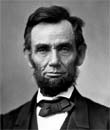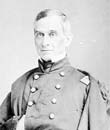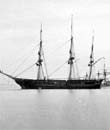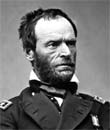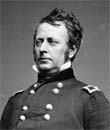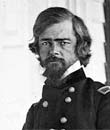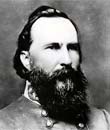
Day-by-Day Timeline of Events
December 26, 1860
U.S. Major Robert Anderson evacuates Fort Moultrie and his garrison relocates to Fort Sumter.
January 4, 1861
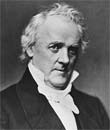
January 6, 1861
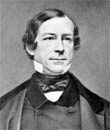
January 8, 1861
A U.S. Army garrison stationed at Fort Barrancas (Pensacola, Florida) turns back an attempted assault to take the fort.
January 9, 1861
The steamer "Star of the West", laden with supplies and en route to Fort Sumter in Charleston (South Carolina), is fired upon by land-based cannons.
January 12, 1861
Star of the West, a steamer having delivered supplies to Fort Sumter in Charleston, South Carolina, returns to New York with her battle-damaged hull resulting from a Confederate attack.
January 29, 1861
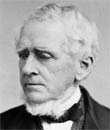
February 4, 1861
In an effort to settle the issue of slavery, representatives of some twenty-one states meet in Washington, D.C. to form the Washington Peace Conference. The conference runs until February 27th.
February 21, 1861
President-elect Abraham Lincoln makes a stop in Philadelphia, Pennsylvania. He is made aware of an assassination plot against his life. In response a special train journey is arranged for him to Washington, D.C.
February 23, 1861
Abraham Lincoln, President-elect of the United States, has his inaugural photograph taken at Matthew Brady's studio.
March 2, 1861
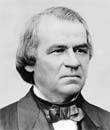
March 4, 1861
Abraham Lincoln is officially inaugurated as the next President of the United States, succeeding James Buchanan.
March 5, 1861
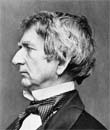
April 6, 1861
President Lincoln notifies the government of South Carolina that general supplies will be sent to Fort Sumter at Charleston Harbor - he gives his assurances that any strengthening of the position will only be made if the Fort is in danger of attack.
April 11, 1861
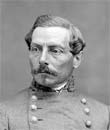
April 12, 1861
With the refusal by Union forces at Fort Sumter to surrender their post, Confederate forces begin their ranged bombardment of the island.
April 12, 1861
At 4:30AM, a gun from Fort Johnson fires a star shell that detonates above Fort Sumter. This is the signal for the surrounding gun batteries to begin shelling the Union-held fort.
April 12, 1861
At 7:00AM, the guns of Fort Sumter return fire against Confederate positions in Charleston Harbor.
April 15, 1861
President Lincoln calls for a special session of Congress to discuss the growing rebellion in the south.
April 15, 1861
President Lincoln pushes for 75,000 soldiers who will each serve three-month tenures.
April 16, 1861
With the stroke of a pen, President Lincoln abolishes the practice of slavery in Washington, D.C.
April 16, 1861
President Lincoln calls on all states in the Union to cease doing business with those southern states that have moved to secede.
April 16, 1861
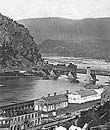
April 18, 1861
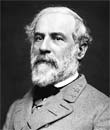
April 19, 1861
President Lincoln calls on all southern ports to be blockaded, the territories in question being the lower East Coast all the way to the Gulf of Mexico.
April 19, 1861
The New York 7th Regiment begins their march to Washington, D.C. to help bolster defenses there.
April 20, 1861
To avoid further clashes with troops, Baltimore formally asks President Lincoln to refrain from having military forces pass through the city.
April 20, 1861
Union forces destroy a section of the Norfolk Navy Yard in Virginia before abandoning it.
April 20, 1861
A resolution is passed in Union Square (New York) calling for citizens to band together and help save the nation from destruction.
April 20, 1861
Telegraphs are confiscated by the United States government to help identify those that would cause harm to the Union.
April 20, 1861
American citizens are arrested throughout Baltimore, Boston and New York without due process - brought about by warrants issued under the name of the United States Secretary of State.
April 21, 1861

April 22, 1861
The United States government moves in to take over the now-vacated estate of Robert E. Lee, known as "Arlington House". The estate sat on the Potomac River.
April 22, 1861
Lieutenant Joseph Wheeler, an officer in the United States Army, resigns his position to join the ranks of the south.
April 24, 1861
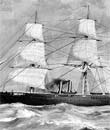
April 27, 1861
President Lincoln adds east coast ports in Virginia and North Carolina to the existing naval blockade action of the South.
May 3, 1861
President Lincoln asks Congress for additional troops for three-year terms - hoping to bolster the ranks of the Army and Navy services. Some 42,000 volunteer forces are required.
May 10, 1861
Union elements take militia forces at Camp Jackson outside of St. Louis, Missouri. The action causes riots to break out.
May 11, 1861
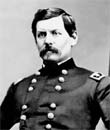
May 14, 1861
Both Fort McHenry and Baltimore, Maryland are occupied by troops under the direction of General Benjamin Butler.
May 24, 1861
Union forces cross the Ohio River into Virginia. Part of their mission is to secure forces loyal to the north found in the eastern part of the state.
June 2, 1861
CSS Savannah manages to beat the Union blockade of Charleston Harbor and escape to open water.
June 3, 1861
En route from Cuba and laden with a cargo hold of sugar, USS Joseph is intercepted and captured by CSS Savannah.
June 3, 1861
USS Perry manages to capture CSS Savannah and her crew intact. The prize is relocated to New York waters.
June 3, 1861
In the war's first contact battle between the two sides, Union forces claim the victory over Confederate elements at Philippi in West Virginia. The retreat of the Confederates, under General Robert Garnett, is so fast the engagement is known as the "Philippi Races".
June 8, 1861
The Kentucky government keeps its military forces neutral in the ongoing - and growing - conflict between the north and south.
June 9, 1861
Mary Ann Bickerdyke begins her tenure as a wartime nurse for the north. Her contributions would go on to include establishment of 300 field hospitals and post-war support of veterans.
June 10, 1861
In the war's first complete pitched battle, the Confederates claim the victory over the Union at Big Bethel, Virginia.
June 10, 1861
Captain Judson Kilpatrick becomes the first Union officer wounded in the conflict, this after Union forces are repulsed at Big Bethel, Virginia.
June 11, 1861
Union loyalists in Western Virginia arrange their own local government. The work lasts through June 19th.
June 13, 1861
In order to improve conditions for injured and recovering troops, the United States Sanitary Commission is established in the north.
June 15, 1861
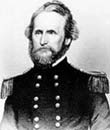
June 17, 1861
Confederate forces claim the victory in a skirmish against Union forces at Vienna, Virginia.
June 17, 1861
Captain Lyon leads his victorious Union forces against opposing militia at Boonville, Missouri in what becomes the Battle of Boonville. Losses are light for both sides and helps the Union maintain control of the Missouri River.
June 17, 1861
Ulysses S. Grant of the Union Army achieves the rank of Colonel and named to the 21st Illinois Volunteer Infantry Regiment.
June 27, 1861
Union numbers defending the Union capital of Washington, D.C. now number close to 40,000 men.
July 2, 1861
President Lincoln suspends "writ of habeas corpus" in unique circumstances - the writ allowing a person the right to report an unlawful detention or imprisonment before a court.
July 11, 1861
Union forces are victorious over Condeferate elements at Rich Mountain in West Virginia.
July 16, 1861
Forces under the command of Union General Irvin McDowell are on the march from Washington, D.C. towards Manassas, Virginia.
July 20, 1861
Union commander Irvin McDowell moves his 10,000 men from Centreville in two forces moving west and south westward. His intention is to flank the left side of the Confederate army.
July 21, 1861
At 8:30AM, Confederate forces at Stone Bridge are made aware of the Union presence at Sudley Road. Confederate General N.G. Evans moves his units to cover any Union retreat.
July 21, 1861
Finding themselves outnumbered, General Evans and his force retreats to Henry House Hill under the Federal pressure.
July 21, 1861
The front lines repeatedly change hands in the battle as both sides make - and lose - progress.
July 21, 1861
At 4:00PM the Confederates manage to force Union parties into retreat back towards Centreville.
July 22, 1861
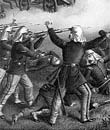
July 22, 1861
General George McClellan is handed control of the Division of the Potomac near Washington, D.C. by President Lincoln.
July 22, 1861
The United States Congress pushes through a resolution that declares the raging war to be about the preservation of the Union and not the ending of slavery.
July 22, 1861
After heavy losses incurred by both sides, the Battle of Bull Run is over. Federal forces retreat hastily back towards the safety of Washington, D.C.
July 27, 1861
Having assumed his new post near Washington, D.C., Union General George McClellan arranges the Army of the Potomac.
July 30, 1861
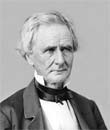
August 2, 1861
General George McClellan forms an agreement with reporters and photographers offering military telegraph services in exchange for limited publishing of Union details.
August 3, 1861
For the first time in warfare a reconnaissance balloon is used by Union forces to assess Confederate positions. The balloon is launched from USS Fanny at Hampton Roads to observe the enemy at Sewell's Point, Virginia.
August 3, 1861
William T. Sherman, then a colonel in the Union ranks, is promoted to Brigadier General.
August 5, 1861
The federal government issues the first-ever income tax to help finance the Union war effort.
August 6, 1861
The Second Confiscation Act is passed by the United States Congress. Details include forfeiting of slaves should one be caught aiding the Confederate war effort.
August 6, 1861
Having completed much-needed work, the United States Congress ends its special session.
August 7, 1861
Colonel Ulysses S. Grant is named Brigadier General in command of volunteer forces at Cairo, Illinois.
August 10, 1861

August 23, 1861

August 30, 1861

September 5, 1861
In an effort to elevate care for the Union wounded in the Western Theater, the Western Sanitary Commission is established in St. Louis, Missouri.
September 10, 1861
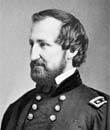
September 11, 1861
The state government of Kentucky calls for the removal of Confederate troops from its soil. The demand falls on deaf ears.
September 11, 1861
Confederate General Robert E. Lee attempts to take Union positions at Cheat Mountain in West Virginia. This marks Lee's first major foray in the war.
September 13, 1861
President Lincoln turns down a request by Chicago-area group to issue an emancipation proclamation. The president is convinced the action would sway border states to the Confederate cause.
September 13, 1861
Forces from the frigate USS Colorado burn an enemy ship during a raid on Pensacola, Florida. The group is led by Lieutenant J.H. Russel.
September 17, 1861
Ships of the United States Navy move in to secure Ship Island off the coast of Mississippi.
October 1, 1861
Confederate generals request 20,000 additional troops to take Maryland. Their request is denied by President Jefferson Davis.
October 2, 1861
To avoid arrest as a traitor, United States Senator John C. Breckinridge escapes Kentucky to join the Confederate cause.
October 9, 1861
Union troops manage to push back a Confederate attack targeting supplies on Santa Rosa Island in Pensacola Harbor, Florida.
October 21, 1861
Confederate forces successfully intercept a traveling Union force at Ball's Bluff, Leesburg, Virginia.
October 21, 1861
Colonel Joseph Plummer leads a Union force to victory over the enemy at Frederickstown in Missouri.
October 21, 1861
U.S. Army Colonel Edward Baker, a longtime and close friend of President Lincoln, is killed at Ball's Bluff, Virginia. He becomes the only sitting senator to be killed in action during the war.
October 24, 1861
Tennessean William Brownlow releases the final edition of the newspaper "Knoxville Whig" which has stood in support of anti-secession.
November 7, 1861
The Battle of Belmont is fought on Missouri soil. It marks the first major engagement for Union General Ulysses S. Grant. A force of about 5,000 Confederates square off against 3,114 Union in Mississippi County, Missouri. It is a Confederate victory but gives Grant much-needed experience in field command.
November 7, 1861
Confederate forces, including generals Leonidas Poke and Gideon Pillow, are victorious against a Union force under the command of General Grant at Belmont, Missouri.
November 8, 1861
USS San Jacinto captures the British mail steamer "Trent" en route from Havana to Europe - aboard are a pair of Confederate commissioners, James Mason and John Slidell.
November 11, 1861
The Union ship G.W. Parke Curtis releases an observation balloon to spy on Confederate positions off the Potomac River.
November 12, 1861
A Scottish-built merchant ship, the "Fingal", acquired in England by Confederate agents, successfully runs the Union blockade at Savannah to deliver much-needed supplies.
November 18, 1861
At Russellville, Kentucky, some authorities gather to vote for independence. George Johnson is named its new governor.
November 18, 1861
Author and poet Julia Ward Howe witnesses a review of Union troops outside of Washington, D.C. inspiring her to produce a new work.
November 19, 1861
Julia Ward Howe pens "The Battle Hymn of the Republic". The poem is written to the song "John Brown's Body".
November 23, 1861
Union defenders at Fort Pickens on Santa Rosa Island in Pensacola, Florida push back a rebel force attempting to overtake their positions.
November 26, 1861
Dranesvill, Virginia sees a Union victory as cavalry forces from both sides go head-to-head in one of the war's smaller battles - the Battle of Dranesville.
December 2, 1861
In the next meeting of the United States Congress, President Lincoln calls for a new railroad to be constructed to help in the Union war effort.
December 10, 1861
Union General Albin Shoepf's forces are run out of Somerset (Kentucky) by a Confederate force led by General Felix Zollicoffer,
December 20, 1861
Near Dranesville, Virginia, Union forces of the Army of the Potomac (led by General Edward Ord) are victorious over General Jeb Stuart and his Confederate elements.
December 26, 1861
To avoid war with Britain, Confederate-aligned commissioners captured two months earlier on the British ship "Trent" are released.
December 28, 1861
The Battle of Sacramento is fought in Sacramento, Kentucky. 500 Confederates square off against 200 to 300 Union troops. The battle ends as a Confederate victory.
January 1, 1862
The Confederate commissioners captured on the British steamer Trent continue their voyage to Europe - ending the "Trent Affair".
January 1, 1862
Union General John Schofield pens a letter to his soldiers to refrain from destruction, plunder and theft of civilian property.
January 9, 1862
David G. Farragut, a Union Flag Officer, is given command of the Western Gulf Blockading Squadron.
January 14, 1862
"Battle Hymn of the Republic" is published for the first time, this in the New York Herald Tribune.
January 19, 1862
Union forces are victorious over the Confederates at Logan Cross Roads (Mill Springs) in Kentucky.
January 27, 1862
In an effort to stir General McClellan to action, President Lincoln announces a deadline of February 22 for an all-out advance of Union forces against confederate positions.
February 4, 1862
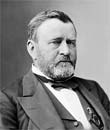
February 5, 1862
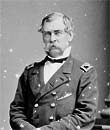
February 6, 1862
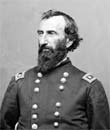
February 6, 1862
At 11:00AM, General Smith's forces begin their march against Fort Heiman along the Tennessee River.
February 6, 1862
Union Flag Officer Foote leads his gunboat flotilla against Fort Henry. The action takes place from 11:00AM until about 1:55PM and is in concert with land movements of General McClernand and General Smith under General Grant.
February 6, 1862
At 6:00PM on this date, General Grant's troops finally claim (through occupation) Fort Henry on the Tennessee River.
February 6, 1862
Fort Henry, along the Tennessee River in Tennessee, falls to forces under the combine efforts of land and naval forces under the direction of General Grant. He then turns his attention eastward towards enemy-held Fort Donelson along the Cumberland River.
February 8, 1862
The Union Navy is victorious over Confederate forces at Roanoke Island in North Carolina.
February 8, 1862
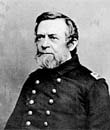
February 10, 1862
Confederate forces of the "Mosquito Fleet" fall to elements of the Union Navy near Elizabeth City, North Carolina as part of the Battle of Elizabeth City. The Mosquito Fleet was originally in service to the state and later passed to the Confederate Navy.
February 11, 1862
General Grant orders an advanced force to begin their march towards Fort Donelson.
February 12, 1862
Despite the combined strength of General McClernand and Smith's divisions, General Grant is forced to stop within twelve miles of Fort Donelson as he remains outnumbered.
February 13, 1862
Forces under the command of Union General Ulysses S. Grant begin their attack to take Fort Donelson along the Tennessee River.
February 13, 1862
Without order from General Grant, both General McClernand and General Smith launch unsuccessful attacks against Fort Donelson.
February 14, 1862
Under heavy and accurate fire, Union Flag Officer Foote's gunboat floatilla are repelled by the guns of Fort Donelson.
February 14, 1862
Union forces under Lew Wallace arrive at Fort Donelson from Fort Heiman and are further reinforced by fresh troops transport via the river Cumberland. With three divisions now formed under General Grant, he holds numerical superiority against the defenders at Fort Donelson.
February 16, 1862
Union General Grant is victorious at Fort Donelson along the Tennessee River in Tennessee. 14,000 prisoners are taken after the General demands an "unconditional and immediate surrender" of the enemy.
February 17, 1862
General Ulysses S. Grant is promoted to the rank of Major General (of volunteers) (from the rank of Brigadier General).
February 20, 1862
Willie Lincoln, son of the President of the United States, succumbs to fever at the age of eleven.
February 20, 1862
Union Captain David Farragut arrives outside of New Orleans, Louisiana with his naval forces in tow. He takes up position at Ship Island near Biloxi, Mississippi. This is part of the campaign to retake the strategically important port city.
February 20, 1862
The Battle of Valverde begins pitting 3,000 union troops against 2,590 confederates in New Mexico Territory. Confederate General Henry Hopkins Sibley leads with General Thomas Green against Edward Canby. They are supported by Texas cavalry as well as land militia forces.
February 22, 1862
Camp Morton in the state of Indianapolis receives its first batch of Confederate Prisoners of War (PoW).
February 28, 1862
The Battle of Island Number Ten (New Madrid, Missouri) begins. Union forces are led by John Pope and Andrew Footer against Confederate foes headed by John McCown and William Mackall. Six Union gunboats are aided by eleven mortar rafts, facing a Confederate force of 7,000.
March 3, 1862
General N.H. McLean in St. Louis, Missouri declares that all Confederate supporters will be hung "...as robbers and murderers..."
March 6, 1862
To assuage Union border states, President Lincoln pushes for compensation to slave owners who end up losing their slaves.
March 6, 1862

March 8, 1862
The Battle of Pea Ridge ends as a Union victory. 1,384 Union personnel are killed against 2,000 Confederate losses.
March 8, 1862
Union cavalry forces near Nashville, Tennessee, under the command of Colonel John H Morgan conduct a series of raids on enemy positions.
March 8, 1862
In the Battle of Hampton Roads, Virginia, CSS Virginia tangled with Union Navy forces n an effort to help unseat the Blockade.
March 9, 1862
In waters off of Hampton Roads, Virginia, CSS Virginia squares off against USS Monitor in naval history's first duel between two ironclad warships. The engagement ends in a draw.
March 9, 1862
At 7:00AM CSS Virginia departs Norfolk and heads to Hampton Roads to finish off USS Minnesota.
March 9, 1862
CSS Virginia is met by USS Monitor in what would come to be known as the "Battle of the Monitor and the Merrimack". Merrimack was the former name of CSS Virginia prior to her conversion as a Confederate ironclad.
March 9, 1862
Fighting between USS Monitor and CSS Virginia continues until 12:15PM at which point CSS Virginia withdraws. The battle, for all its importance to both sides, is labeled indecisive as little headway is made for either party. The Battle of Hampton Roads is over.
March 10, 1862
Confederate General Joseph Johnson pulls his forces out of Manassas, wary of the threat posed by General McClellan's forces in the area.
March 11, 1862
Having grown tired of General McClellan's inaction to this point in the war, President Lincoln moves to take the General's title of General-in-Chief away. McClellan continues to lead as commander of the Army of the Potomac.
March 14, 1862
The Battle of New Bern is had in Craven County, North Carolina. 11,000 Union soldiers are supported by fourteen gunboats against a Confederate Army showcasing 4,000 troops and single cavalry regiment. The result is a Union victory with minimal losses on both sides.
March 14, 1862
New Bern, North Carolina falls to a combined Union land-naval force led by General Ambrose Burnside.
March 15, 1862
To better handle the ongoing war situation covering Florida, Georgia and South Carolina, Union authorities establish the Department of the South.
March 17, 1862
Union General George McClellan begins marching his army towards the Confederate capital of Richmond, Virginia.
March 23, 1862
At a battle site in Kernstown, Virginia, Confederate forces led by Stonewall Jackson are repelled.
March 23, 1862
The First Battle of Kernstown (Winchester, Virginia) is had. This one-day engagement sees a Union force numbering between 6,350 and 9,000 against a Confederate force of 3,000 to 4,200. Both sides gain the advantage as the Union claim a tactical victory and the Confederates a strategic one. Casualties number 590 for the North and 718 for the South.
March 26, 1862
The Battle of Glorieta Pass is fought between 1,300 Union troops and 1,100 Confederates. The engagement is a two-day affair spanning from March 26th until March 28th and leads to a Union Victory in northern New Mexico Territory.
April 4, 1862
Gneeral John Pope's Union forces at New Madrid, Missouri, complete the construction of a canal intended to bypass Confederate firepower along the Mississippi River at Island Number Ten.
April 4, 1862
The Peninsular Campaign begins under the leadership of Union General George McClellan (Army of the Potomac). The target is the Confederate capital of Richmond, Virginia. By April 30th, Union forces will number 115,350 strong against an estimated force of up to 100,000 Confederates.
April 5, 1862
General McClellan's Army of the Potomac begins the siege of Confederate-held Yorktown in Virginia.
April 6, 1862
The Battle of Shiloh begins in Hardin County, Tennessee. Union generals Ulysses S. Grant and Don Buell lead a force of some 63,000 against 40,335 Confederates led by generals Beauregard and Albert Johnston.
April 7, 1862
The Battle of Shiloh ends in a Union victory. 13,047 Union soldiers are killed along with 10,699 Confederate soldiers.
April 7, 1862
Island Number Ten along the Mississippi River, south of New Madrid, Missouri, is given up by the defending Confederate garrison.
April 8, 1862
The Battle of Island Number Ten draws to a close as the Union claims the victory. Some 7,000 Confederates surrender in the aftermath.
April 10, 1862
Once again President Abraham Lincoln is forced to plead for General McClellan to move to action in Virginia - comparing the current offensive with what was witnessed at Manassas some time earlier.
April 11, 1862
Fort Pulaski in Georgia falls to Union forces. The forts strategic placement at the mouth of the Savannah River made it important for both sides.
April 12, 1862
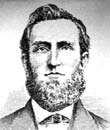
April 16, 1862
Following the abolition of slavery in Washington, D.C., Congress pushes through a measure to compensate former slave owners in the D.C. area.
April 24, 1862
The Confederate fleet near New Orleans, Louisiana is destroyed by a Union force under the command of Flag Officer David Farragut.
April 24, 1862
CSS Stonewall Jackson, launched in January of 1862, is driven ashore and burned and pressured by Union Navy elements.
April 25, 1862
With no more fight left, Confederate forces surrender the important port city of New Orleans to Union elements.
April 28, 1862
Confederate elements at Fort St. Philip and Fort Jackson (New Orleans) surrender to Union forces.
May 4, 1862
General McClellan's forces take Yorktown, Virginia. Land mines are first experienced here.
May 5, 1862
The Battle of Williamsburg occurs with inconclusive results for both sides. General McClellan leads Union forces against General Johnston and Longstreet. Casualties total 2,283 for the North and 1,682 for the South.
May 6, 1862
To face off against Union General John C. Fremont, Stonewall Jackson combines forces with Brigadier General Edward Johnson at Staunton, marching west to meet the enemy.
May 8, 1862
On this date the Battle of McDowell occurs - a one-day engagement pitting 6,500 Federals against 6,000 Confederates. Stonewall Jackson leads the latter and the battle goes down as a Confederate victory. Losses total 2,59 for the North and 420 for the South. Brigadier General Robert Milroy commanded the North.
May 10, 1862
With Confederate forces having retreated out of Norfolk, Virginia, Union forces move in and claim the important seaside town.
May 5, 1862
A Confederate river fleet voyages out of Memphis, Tennessee and meet a Union squadron - Southern forces are repelled in the ensuing battle.
May 12, 1862
Having chased Union forces off north of Franklin (West Virginia), Stonewall Jackson turns back towards the Shenandoah Valley.
May 13, 1862
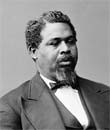
May 14, 1862
Despite numerical superiority, General McClellan stops his advancing Union troops 20 miles outside of the Confederate capital of Richmond, Virginia, to await inbound reinforcements.
May 15, 1862
Confederate guns at Drewry's Bluff turn back the James River Flotilla approaching Richmond. The squadron had managed to reach within 8 miles of the Confederate capital city.
May 15, 1862
Per General Butler's order, any woman insulting Union troops in New Orleans is to be treated as a prostitute.
May 18, 1862
Thomas Jackson returns to the Shenandoah Valley en route to meet Union General Nathaniel P. Bank's force. He reaches Mount Solon, Virginia.
May 20, 1862
Jackson by-passes General Bank's force by way of the southeast side of Massanutten Mountain and up the Luray Valley.
May 20, 1862
The Homestead Act is signed into law by President Lincoln. This is arranged to encourage western migration for settlers and offered to those who have not gone against the Union.
May 23, 1862
On this date, General Jackson engages Union forces in the Battle of Front Royal. The engagement ends as a Confederate victory with 773 Union elements killed to just 36 Confederates. John Reese Kenly commanded the North garrison. The action now threatens supply lines to General Bank's forces.
May 5, 1862
The First Battle of Winchester is had. Confederate Thomas Jackson is victorious over the Union forces led by Nathanial Banks. Banks had retreated to Winchester and was met by Jackson, who ultimately was able to secure victory and the town itself.
May 27, 1862
Union General Banks retreats with his forces across the Potomac Rover with Thomas Jackson in hot pursuit. This ends the first phase of the Shenandoah Valley Campaign and claims several victories for the South.
May 30, 1862
Falling to Union pressure, General Beauregard orders a withdrawal from Corinth, Mississippi.
May 30, 1862
Union forces are back in Front Royal, Virginia in the hopes of reclaiming captured forces.
June 1, 1862
The Battle of Seven Pines (Battle of Fair Oaks) ends as an inconclusive victory. Confederate General Joseph Johnston is badly wounded. Casualties amount to 6,134 Confederates against 5,031 Union fighters.
June 6, 1862
Memphis, Tennessee is surrendered by Confederate forces following a running naval battle.
June 8, 1862
The Battle of Cross Keys is had pitting a Union force of 11,500 led by General Fremont against 5,800 Confederates under General Ewell. The result is a Confederate victory with 664 Union casualties versus 287 Confederates.
June 9, 1862
Union forces are driven back at Port Republic in Virginia during the one-day engagement known as the Battle of Port Republic. Union losses count 1,002 against the Confederate's 816.
June 15, 1862
Confederate General Jeb Stuart completes his raiding against General McClellan's forces in Virginia.
June 16, 1862
The Battle of Secessionville takes place in Charleston, South Carolina. It is a Confederate victory by Nathan Evans and Thomas Lamar. Union General Henry Benham, who had violated orders in the engagement, is arrested
June 24, 1862
Construction on a canal is started by Union engineers along the Mississippi River near heavily-defended Vicksburg. General Thomas Williams directs.
June 25, 1862
The Seven Days Battles are begun - six major engagements spanning seven days and pitting forces of General McClellan against forces of General Robert E. Lee. It marks a Confederate victory though losses are heavy for both sides. the battles take place around the Confederate capital of Richmond, Virginia near Oak Grove.
June 26, 1862
The Battle of Beaver Dam Creek - also Battle of Mechanicsville - is fought between General McClellan and General Robert E. Lee. Losses total 361 for the Union and 1,484 for the Confederates. However, the Union can only claim a tactical victory. This is the second battle of the Seven Days Battles.
June 6, 1862
The Army of Virginia (formerly the Army of the Potomac) is now handed to General John Pope per President Lincoln's order.
June 27, 1862
The third contest of the Seven Days Battles is fought during the Battle of Gaine's Mill. It is a Confederate victory by Robert E. Lee over McLellan.
June 27, 1862
The Union Army of the Cumberland is now under the direction of General William Rosecrans.
June 27, 1862
The fourth installment of the Seven Days Battles is fought during the Battle of Garnett's and Golding's Farm. It results as inconclusive and neither side fail to make headway. Losses are minimal by the war's standard - 189 Union elements to the Confederate's 438.
June 28, 1862
Union Navy boats pass under the guns of Vicksburg to reach friendly forces up the Mississippi River.
June 29, 1862
The Battle of Savage's Station, the fifth of the Seven Days Battles, is fought. It is another inconclusive engagement with the Union suffering 1,038 casualties against the Confederate's 473. Sumner led the Union forces against Magruder. Union forces withdraw.
June 30, 1862
The Battle of White Oak Swamp - as part of the Seven Days Battles - of fought and marks another inconclusive victory. Union General Franklin leads against Stonewall Jackson. Losses are minimal for both sides.
July 1, 1862
The Seven Days Battles draw to a close. Casualties total 18,849 for the Union and as many as 20,100 for the Confederates. It is a Confederate victory nonetheless as General McClellan's forces fail to make progress. It makes the culmination of the Peninsular Campaign.
July 1, 1862
The Battle of Booneville is fought at Booneville, Mississippi. Losses are light for both sides with the Union claiming the victory.
July 1, 1862
A 5000-strong Confederate cavalry assault is repulsed by a much smaller Union force of 827 with Colonel Philip Sheridan in command.
July 2, 1862
The United States Congress passes a law forcing oaths to the Union cause to be given by governmental and military officials.
July 5, 1862
The Battle of Lebanon takes place in Lebanon Kentucky. As many as 400 Union troops face off against 2,460 Confederates. The battle goes down as a Confederate victory.
July 7, 1862
Under the direction of Union General Benjamin Butler, William Mumford is hanged in New Orleans for his April removal of an American flag.
July 13, 1862
Murfreesboro, Tennessee is taken by Confederate cavalry forces under the command of General Nathan Bedford Forrest.
July 16, 1862
For the first time in US Naval history, the rrank of Rear Admiral is attained - the honor given to David Farragut.
July 17, 1862
The First Battle of Cynthiana is had in Cynthiana, Kentucky. Confederate General John Morgan and his raiders are victorious in taking the town as well as its defending Union garrison.
July 18, 1862
Newburgh, Indiana is captured by General Adam "Stovepipe" Johnson. In what became known as the "Newburgh Raid", Johnson was able to convince defending Union forces that his army was of considerable size though, in reality, it numbered twelve men and had two joints of stovepipe fitted to a wagon to simulate a cannon.
July 31, 1862
From a position at Coggin's Point in Virginia, Confederate guns manage little damage against Union warships located near Harrison's Landing.
August 5, 1862
The Battle of Baton Rouge takes place on this date. Forces include 2,500 Union against 2,600 Confederate. The battle goes down as a Union victory with similar losses to both sides (371 and 478 respectively).
August 5, 1862
Confederate Captain Alexander Todd is killed in fighting near Baton Rouge, Louisiana. Todd is the brother-in-law of sitting President Abraham Lincoln. He is also the victim of friendly-fire.
August 8, 1862
Stonewall Jackson's forces cross the Rapidan River just north of Gordonsville to head off Union general Pope and his forces.
August 9, 1862
Stonewall Jackson's forces are victorious over Union troops at Cedar Mountain, Virginia.
August 9, 1862
Nathaniel Banks' Union forces manage several victories before being driven back by Stonewall Jackson's forces.
August 13, 1862
Allowed to work on the front lines by Union authorities, Clara Barton - founder of the Red Cross - attends to both friendly and enemy troops in the field. She would be present at the battles of Second Bull Run, Antietam and Fredricksburg thereafter.
August 18, 1862
Union General Pope is forced back over the Rappahannock River due to growing Confederate pressure.
August 22, 1862
J.E.B. Stuart's Confederate cavalry forces raid around Catlett's Station (Virginia) and capture 300 Union troops, detailed plans and supplies.
August 26, 1862
Stonewall Jackson and his forces are able to pass between Washington, D.C. and the army of General Pope.
August 27, 1862
Ewell's division is ordered to Bristoe Station by Stonewall Jackson to delay Pope's arriving troops.
August 28, 1862
The Second Battle of Bull Run officially begins. Confederate shelling is heard at 6:30PM. The action takes place around Brawner's Farm (Groveton).
August 30, 1862
General Longstreet's force, under Major General Richard Anderson and having arrived on the battlefield at 3AM, enacts a counterattack that ultimately pushes Union elements to retreat.
August 30, 1862
The Second Battle of Bull Run ends as a considerable Confederate victory (as did the first). The Confederate forces were outnumbered man-to-man but managed significant casualties against the enemy.
September 1, 1862
The Battle of Chantilly (Virginia) - also known as "Ox Hill" - takes place. It ends inconclusively as both sides fail to gain the initiative. Casualties number 1,300 Union and 800 Confederate. The battle marks the end of the Northern Virginia Campaign that includes Second Bull Run.
September 2, 1862
Union General Pope orders his forces to retreat to the outskirts of Washington, D.C.
September 2, 1862
General George McClellan is appointed by President Lincoln to succeed outgoing General Pope as leader of the Army of Virginia.
September 4, 1862
Near Leesburg, Virginia, the Army of Northern Virginia begins its crossing along the Potomac River.
September 5, 1862
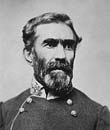
September 5, 1862
CSS Alabama captures the Ocmulgee in the Azores. This marks the Confederate vessel's first claim of a commercial vessel. The enemy ship is burned while its crew is taken prisoner.
September 7, 1862
General George McClellan begins a slow advance away from Washington, D.C. to meet the Confederate threat emerging from Virginia.
September 9, 1862
Special Orders 191 is given by General Lee, ordering a special column formation to be taken by his troops to increase the chances of overtaking Harpers Ferry and the Union forces garrisoned there.
September 11, 1862
General Lee assigns General Longstreet to guard the approaches from the north while General Hill is given the task of the defending the approaches from the south of Harpers Ferry.
September 11, 1862
General Jackson engages Union forces at Martinsburg and drives them back towards Harpers Ferry.
September 13, 1862
The Army of the Potomac arrives at Frederick, Maryland. Once there, soldiers recover a copy of General Lee's plans.
September 13, 1862
Captured Confederate plans are given over to Union General McClellan - who suspects the plans are a trap.
September 14, 1862
The Battle of South Mountain takes place. It is a Union victory for General McClellan, General Burnside and General Franklin over General Lee and General Hill.
September 14, 1862
The Battle of Crampton's Gap (Burkittsville) is a Union victory for General Franklin over General Cobb. Forces number 12,800 to 2,100, respectively.
September 14, 1862
The Battle of South Mountain is had in Maryland leading to a Union victory. 28,000 Union troops square off against 18,000 Confederates. Losses for both sides are nearly equal.
September 14, 1862
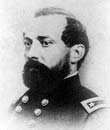
September 15, 1862
General Jackson's forces open up with artillery strikes against Union forces at Harpers Ferry.
September 15, 1862
A Confederate division under the command of General John Walker takes Loudoun Heights.
September 16, 1862
Confederate General Bragg claims Munfordville, Kentucky. Those Union defenders still alive are taken prisoner.
September 16, 1862
Having suffered a mortal wound at the Battle of Harpers Ferry, General Dixon Miles dies.
September 17, 1862
The Battle of Antietam is had near Sharpsburg, Maryland and results of the one-day engagement are tactically inconclusive. 87,164 Union troops (led by McClellan) face off against 38,000 Confederates (led by Lee). Casualties are 12,410 and 10,316 respectively.
September 17, 1862
Union forces at Cumberland Gap, Tennessee are driven away by the Confederates, leaving the remaining garrison to fend for itself.
September 19, 1862
The Union Army claims a victory at the Battle of Iuka, driving off the now-retreating Confederates. The battle takes place near Iuka, Mississippi and involves 4,500 Union and 3,179 Confederates.
September 20, 1862
Union forces attempt to take General Lee's army at Blackford's Ford after crossing the Potomac but are driven back.
September 22, 1862
President Lincoln's Emancipation Proclamation is set to take effect on January 1st, 1863. The proclamation covers only those slaves in Confederate-governed states but excludes those border states supporting the Union.
September 25, 1862
Union warships bombard Confederates at Sabine City, Texas. The defenders are driven away.
September 27, 1862
The First Regiment Louisiana Native Guards is formed. It marks the first Union Army regiment made up entirely of free blacks.
September 29, 1862
Union General William Nelson is shot and killed by fellow Union General Jefferson C. Davis following an argument between the two men. Davis is later court-martialed.
September 30, 1862
The First Battle of Newtonia is had in Newtonia, Missouri. 1,500 Union forces face a brigade of Indians which results in a Confederate victory.
October 3, 1862
Union forces gain the upper hand against the Confederates at Corinth, Mississippi. The battle marks one of the few uses of the bayonet charge in the whole of the war.
October 8, 1862
The Battle of Perryville is had in Boyle Country, Kentucky. It pits 22,000 Union against 16,000 Confederates and results in a Union strategic victory. Losses are 4,241 and 3,396 respectively.
October 22, 1862
Union forces are driven off by defending Confederates at Yemassee in South Carolina.
October 26, 1862
General McClellan leads his forces over the Potomac River into neighboring Virginia.
October 28, 1862
The 79th U.S. Colored Infantry Regiment from Kansas is the first black regiment to see combat for Union forces. It is involved in clashes at Island Mounds, Missouri.
October 30, 1862
Union General Buell, head of the Army of the Cumberland, is replaced by General Rosecrans.
November 3, 1862
CSS Cotton and shoreline guns at Berwick Bay, Louisiana, drive away Union naval forces.
November 3, 1862
Union ground forces, aided by five gunboats, attack Confederate positions at Bayou Teche in Louisiana.
November 5, 1862
General Ambrose Burnside replaces General George McClellan as commander of the Army of the Potomac per President Lincoln's request.
November 5, 1862
General Wade Hampton's forces are driven out of Barbee's Crossroads in Virginia by Union cavalry under the command of General Alfred Pleasonton.
November 21, 1862
Union General Edwin Sumner calls for Confederate forces to surrender Fredricksburg.
November 23, 1862
New Orleans is home to a large show of force as tens of thousands of infantry are paraded through the streets.
November 28, 1862
General Wade Hampton directs a cavalry raid at Hartwood Church in Virginia against Union forces and captured nearly 100 men.
November 28, 1862
Cane Hill, Arkansas is site to a modest clash of forces. The Union claims the victory.
November 29, 1862
Following Union General Philip Kearny's death at the Battle of Chantilly in September of 1862, the Kearny Medal for Officers is established.
December 1, 1862
Abraham Lincoln addresses the U.S. Congress. In his speech, he declares openness to allowing freed slaves the option to resettle in other countries.
December 7, 1862
The Battle of Prairie Grove is had in Washington County, Arkansas. The one-day clash is a Union victory.
December 7, 1862
The Union garrison at Hartsville, Tennessee falls to cavalry led by Colonel John Morgan.
December 7, 1862
CSS Alabama is forced to release a captured steamer carrying 640 persons, including 140 Union troops, as it lacks the facilities to take them on.
December 10, 1862
Dumbries, Virginia is raided by Confederate cavalry attached to General Wade Hampton's forces.
December 11, 1862
Fredericksburg, Virginia is bombarded by artillery under General Burnside's direction.
December 11, 1862
General Burnside's Union forces cross the Rappahannock River to reach Fredericksburg, Virginia.
December 11, 1862
The Battle of Fredericksburg begins encompassing actions in Spotsylvania and Fredericksburg counties. The clashes pit a much smaller Confederate force of 78,513 against 122,009 Union troops. Commanders are General Lee (Confederate) against General Burnside (Union).
December 12, 1862
USS Cairo is sunk by an electrically-detonated Confederate naval mine. The action takes place at Yazoo River near Haines Bluff, Mississippi.
December 13, 1862
A Confederate cavalry raid into Dumbries, Virginia yields a wagon train and fifty prisoners for the attackers.
December 13, 1862
General Burnside's larger force is beaten by General Lee's Army of Northern Virginia as part of the Battle of Fredericksburg.
December 14, 1862
Union General Benjamin Butler is relieved of command of the Department of the Gulf by General Nathaniel Banks.
December 15, 1862
The Battle of Fredericksburg ends as a Confederate victory. Confederate numbers are 78,513 committed to action with losses numbering 4,201. Union numbers are 122,009 committed with 12,653 losses.
December 16, 1862
Beginning on December 16th, 1861 and running into the New Year, cavalry raids led by Confederate General Nathan Bedford Forrest across eastern Tennessee are had.
December 17, 1862
General Grant forces out all merchant Jews under his district control due to Treasury violations (black market dealings involving cotton). This is known as General order No.11 and includes Jews in Tennessee, Mississippi and Kentucky.
December 23, 1862
To dissuade further involvement of free blacks in Union ranks, the government of the South decrees that any captured freed slaves fighting under the Union banner face prosecution under local laws. This includes both punishment and execution for fighting the South.
December 23, 1862
Confederate President Davis makes a call to label Union General Benjamin Butler an "outlaw" in response to Butler's earlier message regarding New Orleans' women.
December 25, 1862
Union forces destroy the railway network at Vicksburg, Mississippi accessing both Louisiana and Texas.
December 26, 1862
J.E.B. Stuart heads cavalry raids against Dumphries, Virginia, netting 200 prisoners. The raids span from December 26th into December 31st.
December 26, 1862
Union forces are beaten back at Chickasaw Bayou in Vicksburg, Mississippi. This two-day engagement marks the Battle of Chickasaw Bayou. Again, a much smaller Confederate force bests a larger Union army. The battle spans into December 29th.
December 31, 1862
The Battle of Stones River begins. Union General Rosecrans leads a force of 43,400 against 35,000 Confederates under General Bragg at Murfressboro, Tennessee. The battle is also known as the Second Battle of Murfreesboro.
January 1, 1863
Lincoln's Emancipation Proclamation goes into effect. The proclamation does not cover those slaves residing in states within the Union itself.
January 1, 1863
Union forces flee Galveston, Texas after a surprise attack by General Magruder and his men. The city is now firmly in Confederate control.
January 1, 1863
Union Navy forces move back into position around Galveston, Texas, ensuring the naval blockade stays in place.
January 2, 1863
The Battle of Stones River, also known as the Second Battle of Murfreesboro, comes to an end. It is a much-needed Union victory. Losses total 12,906 for the Union and 11,739 for the Confederates.
January 4, 1863
President Lincoln is at odds with General Grant on the topic of expelling Jewish merchants operating within Grant's military district. He calls on Grant to repeal the earlier expulsion order.
January 8, 1863
Springfield, Missouri is raided by a combined Confederate cavalry force led by General Marmaduke and Colonel Quantrill.
January 11, 1863
The Union Army claims Fort Hindman off the Arkansas River near Little Rock. Union Navy gunboats assist in the successful action.
January 14, 1863
Bayou Teche, Louisiana is site to another Union-versus-Confederate engagement. This action involves both land forces and gunboat support for the Union.
January 15, 1863
CSS Florida conducts various raids down the East Coast of the United States and beyond, her journey beginning in the port-city of Mobile, Alabama.
January 20, 1863
Union forces, under the leadership of General Burnside, attempt a surprise offensive against General Lee's army in Virginia. However, conditions are such that the march is aborted. It comes to be known as the "Mud March".
January 21, 1863
Confederate warships capture several Union vessels at Sabine Pass in Texas. This success alleviates the naval blockade for a time.
January 21, 1863
Union General Fitz John Porter is dishonorably discharged from the Union ranks for his conduct in the Second Battle of Bull Run.
January 25, 1863
General Hooker is placed in charge of the Army of the Potomac - succeeding General Burnside. The assignment is handed down by President Lincoln himself.
January 29, 1863
A Confederate supply ship, Princess Royal, is intercepted by Union naval forces near Charleston Harbor, South Carolina.
January 30, 1863
General Ulysses S. Grant assumes command of Union forces near Vicksburg, Mississippi.
January 30, 1863
Union land forces, aided by the Navy, cut-off enemy supply lines running from North Carolina into Richmond, Virginia.
January 31, 1863
Union naval forces at Charleston Harbor, South Carolina, are defeated in a raid by CSS Palemetto State and CSS Chicora.
February 14, 1863
After running aground in the Black River (Louisiana), USS Queen of the West is taken by Confederate forces.
February 24, 1863
USS Indianola is grounded by Confederate warships and taken over. The action takes place near Warrenton in Mississippi.
February 28, 1863
CSS Rattlesnake (fmr CSS Nashville) is destroyed by Union warships at Fort McAllister near Savannah, Georgia.
March 3, 1863
To help strengthen Union numbers, the Enrollment Act (Civil War Military Draft Act), the first of its kind in U.S. history, is enacted. It covers those aged 20 to 45.
March 3, 1863
The U.S. government passes a resolution opposing foreign intervention in the bloody American conflict.
March 3, 1863
The U.S. Congress declares the Medal of Honor award now open to officer-level persons.
March 3, 1863
In a two-day clash of cavalry forces at Thompson's Station, Tennessee, Confederate forces are victorious.
March 8, 1863
Union General Edwin Stoughton is captured while asleep at Fairfax Court House in Virginia by Partison Rangers led by Confederate Lieutenant John Mosby.
March 8, 1863
The under-construction Union canal at Vicksburg, Mississippi is flooded out due to a levee break.
March 11, 1863
In an action at Greenwood, Mississippi, Union warships fail to neutralize Fort Pemberton.
March 13, 1863
The late Philip Kearny is honored by the establishment of the Kearny Cross award arranged for privates and non-commissioned officers.
March 14, 1863
Despite heavy damage, a Union fleet under the direction of Admiral Farragut gets by the confederate guns of Port Hudson in Louisiana.
March 14, 1863
Steele's Bayou Expedition is begun. The operation sees a combined Union force directed by General Grant and Rear Admiral Porter attempt to reach the rear of Vicksburg, Mississippi. The expedition would last until March 27th.
March 17, 1863
Confederate forces at Fort Pemberton block General Grant's passage along the Yazoo River in Mississippi.
March 17, 1863
The Provost Marshall Department if created by the U.S. government. The department will head the military police and drafting of new personnel into the armed services.
March 25, 1863
Brentwood, Tennessee and Franklin, Tennessee are raided by cavalry forces under the command of General Forrest.
March 30, 1863
Confederate forces are beaten by the Union Army in Kentucky. Confederate General Pegram's forces are pushed back across the Cumberland River. The Union charge is led by General Quincy Gillmore.
April 5, 1863
It is revealed that thousands of Confederate prisoners have died in captivity at Camp Douglas in Chicago, Illinois.
April 7, 1863
Union ironclads engage the defenses at Fort Sumter but do not manage to break the will of the defenders.
April 8, 1863
USS Keokuk is lost following its previous day's participation in the engagement at Fort Sumter.
April 17, 1863
General Benjamin Grierson of the Union Army undertakes a series of cavalry raids against Confederate positions beginngin at LaGrange, Tennessee.
April 26, 1863
Union forces are successful in driving back Confederate cavalry at Cape Girardeau, Missouri.
April 27, 1863
Confederate forces are successful in driving back a Union navy attack at Grand Gulf, Mississippi.
April 28, 1863
The "Invalid Corps" is established by the Union Army. It includes two classes of soldiers: those partially disabled and still in active service and those discharged due to a disability but still wanting to serve.
April 30, 1863
President Lincoln calls for a day of "Humiliation, Fasting and Prayer" amidst the growing, bloody years-long conflict between the North and South.
April 30, 1863
The Battle of Chancellorsville begins in Spotsylvania County, Virginia. Union forces are directed by General Hooker while the Confederates are led by general's Lee and Jackson. The Confederates number a much smaller force at just over 60,000 men. They face Union strength (Army of the Potomac) of over 130,000.
May 2, 1863
General Benjamin Grierson's cavalry raids against Confederate positions ends at Baton, Rouge, Louisiana.
May 3, 1863
A much smaller force of Confederate cavalry, led by General Forrest, captures Union cavalry raiders in Alabama.
May 5, 1863
With vocal and public opposition to to Lincoln's war, Congressman Clement Vallandigham (Ohio) is arrested.
May 6, 1863
The Battle of Chancellorsville is over as a Confederate victory. However, the Confederate Army is dealt a blow when it is revealed that Stonewall Jackson is mortally wounded (by friendly fire). Losses for both sides include 17,300 for the Union and 13,300 for the Confederates.
May 12, 1863
Union forces outside of Jackson, Mississippi are victorious at Raymond (Battle of Raymond). General James McPherson is the commander of the Army of the Tennessee and heads a force 12,000 strong against 4,400 Confederates (under John Gregg). Losses are 446 Union to 820 Confederates.
May 14, 1863
General Grant captures Jackson, Mississippi (Battle of Jackson, Mississippi). Losses include 286 Union and 850 Confederates.
May 16, 1863
The Battle of Champion Hill (Baker's Creek) is a one-day engagement between the Army of the Tennessee under General Grant and the Department of Mississippi and East Louisiana. Force strength includes 32,000 and 22,000 respectively. Losses amount to 2,457 and 3,840 respectively. It is a Union victory.
May 19, 1863
Vocal war critic (and now disgraced U.S. Congressman) Clement Vallandigham is banished to the South by President Lincoln.
June 1, 1863
Operations of the Chicago Times is ordered stopped by General Burnside. President Lincoln steps in to reverse the order.
June 2, 1863
Former slave Harriet Tubman guides Union forces to raid Confederate plantations in the South Carolina Lowcountry. About 750 slaves are freed in the operation and these men strengthen Union numbers by joining their ranks. The raid is recognized as the Raid at Combahee Ferry.
June 7, 1863
The Battle of Milliken's Bend occurs. Confederate General Richard Taylor attacks a Union base at Madison Parrish, Louisiana. The attackers are driven off by a force led by commander Hermann Lieb. The result is a Union victory though casualties number 652 for the North.
June 12, 1863
Confederate navy elements begin a period of raids against Union shipping along the American East Coast.
June 14, 1863
Winchester, Virginia falls to Confederate Cavalry under the command of General Richard Ewell.
June 19, 1863
At the expense of the 1st Rhode Island Cavalry, Union forces are victorious in Middleburg, Virginia.
June 21, 1863
Union forces are victorious is a clash of cavalry with the South. The Confederates are led by J.E.B. Stuart and the fighting takes place at Upperville, Virginia.
June 24, 1863
Confederate navy forces conclude their raids against Union shipping targets along the northeast American coast.
June 25, 1863
Despite an attempt by Union engineers to destroy the Vicksburg defenses from below, Vicksburg remains under Confederate control.
June 26, 1863
General William Henry Fitzhugh Lee, son to Confederate General Robert E. Lee, is captured by Union forces in Hanover, Virginia.
June 27, 1863
General Joseph Hooker of the Union Army tenders his resignation from the Army of the Potomac due to a dispute with Army HQ on the status of the defense at Harpers Ferry. The resignation is accepted by President Lincoln.
June 28, 1863
General George G. Meade replaces General Joseph Hooker in charge of the Army of the Potomac.
June 28, 1863
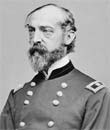
June 28, 1863
Union defenders at Fort Butler in Donaldsonville, Florida are victorious against attacking Confederate forces.
June 29, 1863

June 30, 1863
The route to Chattanooga is threatened when Confederate General Bragg is forced to abandon his positions in northern Tennessee.
June 30, 1863
Attacking Confederate cavalry forces, led by General Stuart, are repelled by a Union counterattack. The clash takes place at Hanover, Pennsylvania.
June 30, 1863
Confederate forces, at brigade strength, tangle with Union elements in Gettysburg in the hopes of securing supplies.
June 30, 1863
West Virginia officially becomes a supporter of the Union cause in the Civil War and commits its resources to the conflict
July 1, 1863
In the northwest of Gettysburg, at Marsh Creek at about 5:30AM, the first shots of the Battle of Gettysburg are fired between Confederate and Union forces.
July 1, 1863
At 8:00AM, Confederate forces - as part of General Henry Heth's division - under the direction of General James J. Archer and General Joseph R. Davis march on Gettysburg.
July 1, 1863
At 10:00AM, during the fighting at Gettysburg, Union General John F. Reynolds is killed.
July 1, 1863
General Solomon Meredith's "Iron Brigade" repels General Archer's Confederates and captures Archer and a few hundred others.
July 1, 1863
At 2:00PM Major General Robert E. Rodes moved his troops against the Union right flank.
July 1, 1863
At 2:00PM, Union General Meade calls on General Winfield S. Hancock to succeed the slain General Reynolds.
July 1, 1863
Upon arriving on scene at about 2:30PM, General Robert E. Lee surveys the battlefield from Herr Ridge.
July 1, 1863
General Lee advances General Heth and William Dorsey Pender's forces. General Heth is wounded.
July 1, 1863
At 3:30PM General Schurz units retreat under attacks from General Jubal A. Early. Their retreat is through the town of Gettysburg itself.
July 1, 1863
At 4:00PM General Pender pushes Union forces to retreat into Gettysburg proper as well as into Cemetery Hill.
July 1, 1863
At 4:30PM, Union forces retreat from Gettysburg and take up fortified positions at the town's south, in Cemetery Hill.
July 1, 1863
At 4:30PM, General Lee provides General Ewell with the option to attack Union forces at Cemetery Hill if an advantage can be had and maintained. Lee understands the Federal forces hold positions on high ground. Ewell does not move on the enemy - perhaps missing a tremendous opportunity to turn the tide of the battle on its first day.
July 1, 1863
Union engineers attempt a second demolition of Union defenses at Vicksburg, Mississippi. This attempt also fails to make progress.
July 2, 1863
At 4:00PM, Federal positions are assailed by Confederate elements at Little Round Top and Devil's Den. Devil's Den falls to the attackers but the defenders at Little Round Top hold out.
July 2, 1863
At 5:30PM, Wheat Field and Peach Orchard, Union-held named areas to the Southwest of Gettysburg, are attacked by forces under the command of General Lafayette McLaws.
July 2, 1863
The ownership of Wheat Field is changed some four times before General Sickle's forces are pushed to the base of Little Round Top. The defensive stand there holds off the Confederates however.
July 2, 1863
Union forces continue to hold primary positions though the Confederates claim some terrain against them - particularly at Cemetery Hills and Culp's Hill.
July 2, 1863
Confederate General John Morgan leads his cavalry forces on the first of several raids throughout Kentucky, Indiana, and Ohio. The raiding actions will run nearly a month.
July 3, 1863

July 3, 1863
From 5:30AM until 10AM, Confederate forces make repeated attempts to unseat and drive off Union forces at Culp's Hill. Little ground is gained in the fighting.
July 3, 1863
Union-held Seminary Ridge is attacked by forces under the command of General Pickett, General Pettigrew and General Trimble.
July 3, 1863
At 3:30PM, General Stannard leads his Union troops against the side of General Pickett's charging division.
July 3, 1863
By 3:45PM, Confederate forces have advanced as much as they will in the battle as Union lines hold.
July 3, 1863
General Farnsworth and his cavalry forces suffer considerable losses against the Confederate lines - the charge called by General Kilpatrick against General Longstreet's position southwest of Big Round Top.
July 3, 1863
At the age of 26, cavalry General Elon J. Farnsworth is killed at the Battle of Gettysburg after a cavalry charge led by General Kilpatrick. Farnsworth protested the action but obeyed nonetheless.
July 3, 1863
At the end of the battle to control Gettysburg (a decisive Union victory), over 57,000 persons became casualties, many wounded, with 23,055 belonging to the Union lines and as many as 28,000 suffered by the Confederacy. Wounded number over 25,000 combined. The Confederacy suffered mightily in terms of officer-level depletion.
July 4, 1863
Vicksburg, Mississippi finally surrenders to General Grant and his Union forces. Some 30,000 prisoners are granted release with the promise not to engage the Union militarily again.
July 4, 1863
Union defenders hold off a Confederate attempt to retake Helena, Arkansas. The Confederates are led by General Theophilus Holmes and the price to take Helena is high for the attackers.
July 4, 1863
Former U.S. President Franklin Pierce delivers a speech in Concord, New Hampshire reminding listeners of the value of liberty in the ongoing conflict which has seen the American military grow in strength and influence.
July 5, 1863
A besieged Union cavalry force at Bardstown, Kentucky surrenders to Confederate attackers.
July 9, 1863
Port Hudson, Mississippi is given up by Confederate defenders after a siege lasting six long weeks. This gives the Union a vast amount of control concerning the Mississippi waterway.
July 9, 1863
Jackson, Mississippi is under siege from forces directed by Union General William Sherman.
July 10, 1863
Charleston, South Carolina is under bombardment from Union naval and land forces. Ironclads are directed by Admiral John Dahlgren.
July 12, 1863
Union forces at Jackson, Mississippi, attempt to overtake Confederate positions but are heavily repulsed. General Jacob Lauman directs the unsuccessful Union charge.
July 13, 1863
The North and South will no longer adhere to the prisoner exchange agreement from earlier in the war.
July 13, 1863
General John Morgan's Confederate cavalry is spotted just north of Cincinnati, Ohio during one of his many raiding actions in Union territory.
July 13, 1863
Over a dozen civilians are killed during rioting in New York after the release of names from the first Union military draft. The rioting spans July 13th until July 16th and involves some 50,000 New Yorkers.
July 16, 1863
With Jackson, Mississippi fallen to Union forces, General Joseph Johnson's Confederate forces abandon the area.
July 18, 1863
Union forces fail to take Fort Wagner. near Charleston, South Carolina. The 54th Massachusetts Regiment taking part in the attack is made up of Negro soldiers, the first of its kind for the Union Army.
July 26, 1863
General John Morgan and his raiding cavalry forces are taken prisoner by Union elements near New Lisbon, Ohio.
July 30, 1863
The Order of Retaliation is handed down by President Lincoln. The measure calls for the execution of one Confederate soldier for every one Union soldier killed in violation of the rules of war.
July 31, 1863
The Union's Army of the Potomac numbers 75,000 men by this date, outpacing that of the Confederate's Army of Northern Virginia which claims just 41,000 to its ranks.
August 5, 1863
USS Commodore Barney is the recipient of a Confederate electrically-powered torpedo. The incident is recorded at Dutch Gap, Virginia. While not sunk, the Barney is severely damaged.
August 21, 1863
Lawrence, Kansas is attacked by Captain William Quantrill. 150 men and boys are slaughtered in the action.
August 26, 1863
Union and Confederate cavalry elements meet one another at Rocky Gap outside of White Sulphur Springs in West Virginia. The clashes last until the 27th.
September 4, 1863
Union General Ulysses S. Grant is injured after being thrown by his horse. The incident takes place in New Orleans, Louisiana.
September 6, 1863
Under pressure from a Union bombardment, Confederate forces relocate from Fort Wagner in Charleston Harbor, South Carolina.
September 8, 1863
Union gunboats fail to defeat Confederate forces at Sabine Pass (Texas). Two of the three attacking warships are taken by the South.
September 9, 1863
Cumberland Gap, Tennessee is claimed by Union forces. Confederate defenders surrender.
September 9, 1863
General Rosecrans directs a capture of Chattanooga, Tennessee forcing Confederates to withdraw. The Confederate forces are led by General Bragg.
September 10, 1863
Following a Confederate withdrawal at Little Rock, Arkansas, Union forces move in. General Frederick Steele is the commander for the North.
September 20, 1863
Confederate forces, in one of the rare meetings where they outnumbered Union forces, claim the victory at the Battle of Chickamauga. Union elements collapse and are pushed away in the stunning defeat.
September 18, 1863
The Battle of Chickamauga begins pitting Northern forces led by General Rosecrans against Southern forces led by General Bragg. The North commits about 60,000 souls to the South's 65,000. The battle lasts two days and covers the counties of Catoosa and Walker in Georgia.
September 20, 1863
The Battle of Chickamauga ends as a Confederate victory. General Rosecrans forces are pushed out of Georgia and retreat to Chattanooga, Tennessee. Losses are 16,170 for the Union and 18,454 for the Confederacy.
September 27, 1863
A cavalry force under the command of Colonel Joseph Shelby heads into Missouri for raiding actions. The venture lasts two days.
October 3, 1863
"Thanksgiving Day" is formally announced by the United States government. It will be celebrated annually from then on.
October 4, 1863
Colonel Quantrill and his raiders take prisoner Union cavalry while dressed in Union garb and proceed to execute about 100. The action takes place near Fort Smith, Arkansas.
October 5, 1863
USS New Ironsides is attacked (by way of spar torpedo) by the submarine CSS David in Charleston, South Carolina waters.
October 6, 1863
Once again wearing Union uniforms, Quantrill and his raiders manage to surprise and kill another 63 Union personnel, this at Baxter Springs, Kansas.
October 10, 1863
Blue Springs, Tennessee is the site of clash between Union cavalry and Confederate forces. The result is a Confederate retreat into Virginia. The North is led by General James Shackelford and the South by General John S. Williams.
October 13, 1863
Union troops under General E.B. Brown at Arrow Rock, Missouri, are victorious over Confederate forces led by General Joseph Shelby.
October 16, 1863
Command of the armies of the West are handed to General Ulysses S. Grant by order of President Lincoln.
October 19, 1863
General Grant writes from Louisville, Kentucky "Hold Chattanooga at all hazards, I will be there as soon as possible." He would arrive in southeast Tennessee four days later.
October 19, 1863
Confederate General Jeb Stuart and his cavalry forces are victorious over Union elements at Buckland Mills, Virginia. The action is remembered as the "Buckland Races". Union elements are commanded by General Hugh Kilpatrick.
October 19, 1863
After the events of Chickamauga, Union General William Rosecrans is relieved of his command. He is succeeded by General George Thomas.
October 20, 1863
Confederate attackers are victorious over Union defenders at Philadelphia, Tennessee. Several hundred are taken prisoner.
October 21, 1863
The attack on Chattanooga is planned by Union authorities including General Grand and General Rosecrans.
October 28, 1863
The Gillmore Medal is announced by General Quincy Gillmore of the Union Army. This award serves to recognize those having attempted to retake Fort Wagner in Charleston Harbor.
October 28, 1863
The battle of Wauhatchie begins pitting XI and XII Corps of the Union against General Longstreet's Corps and Jenkin's Brigade. The battle will span into the 29th of October.
October 29, 1863
The Battle of Wauhatchie concludes as a Union victory. Losses total 420 for the North and 408 for the South.
November 2, 1863
This date marks the start of the Battle of Brownsville (Texas). General Banks leads the Union against Mexican Patriots led by former Confederate Generals.
November 6, 1863
Union troops move into Brownsville, Texas, expanding their foothold in the Confederate state.
November 7, 1863
Union forces are victorious at Rappahannock Bridge in Virginia. The attack involves a rare bayonet charge in the evening hours.
November 10, 1863
The Signal Corps is ordered to move its equipment to the Military Telegraph Service.
November 18, 1863
Confederate General Longstreet and his army force a retreat of Union elements (namely cavalry). The Union Army relocates to the safety of Knoxville, Tennessee but a siege is ordered to bring the enemy to surrender.
November 19, 1863
The Gettysburg Address is delivered by President Lincoln on the battlefield itself. It becomes one of the most revered and iconic speeches in American history despite its rather short length. The speech serves to dedicate the Soldier's National Cemetery in Gettysburg proper.
November 26, 1863
With Confederate forces in retreat from Chattanooga, Union Generals Sherman and Hooker follow in an attempt to smash the enemy.
November 27, 1863
Union General Meade and his forces move to tackle the forces of General Less at Mine Run, Virginia. The Battle of Mine Run ensues and spans from November 27th until December 2nd. Union strength numbers 81,000 against a Confederate Army of 48,000.
November 29, 1863
Prisoner General John Morgan and six associates dig their way to freedom from an Ohio prison.
November 29, 1863
Confederate attackers are forced back by Union defenders at Fort Sanders near Knoxville, Tennessee.
December 2, 1863
Results of the Battle of Mine Run are inconclusive. Casualties amount to 1,272 Union losses and 680 Confederate.
December 4, 1863
Robert E. Lee's former estate at Arlington, Virginia, is dedicated as Freedman's Village to serve as home to some 1,100 former slaves.
December 5, 1863
Confederate forces leave their siege of Knoxville and exit the state. This grants Union forces complete control of the Confederate territory.
December 7, 1863
President Lincoln calls on church-goers to thank God for the Union victory at Chattanooga.
December 7, 1863
The Union steamer USS Chesapeake is taken over by Confederate soldiers in civilian clothing. The brazen action takes place off the Massachusetts coast. The vessel is relocated to Canadian waters of Nova Scotia.
December 7, 1863
The Proclamation of Amenesty and Reconstruction is issued by President Lincoln. The measure is part of Lincoln's plan for reunification and provides pardons to Confederates willing to take an oath of loyalty to the United States of America.
December 8, 1863
In an address to Congress, President Lincoln reveals that around 100,000 former slaves have joined the Union ranks in the fight against the South.
December 15, 1863
A Confederate attempt fails against Union cavalry elements at Bean's Station, Tennessee forcing General Longstreet to rearrange his subordinate command.
December 17, 1863
General Grant, for his services (and successes) in the ongoing war is recognized by the U.S. Congress by way of an official thanks and a gold medal.
January 30, 1864
The Department of the Missouri is handed over to General Rosecrans of the Union Army.
February 1, 1864
From the period of February 1st to the 3rd, Confederate forces unsuccessfully attempt to retake New Bern, North Carolina from Union defenders.
February 2, 1864
USS Underwriter is claimed and destroyed by Confederate warships in the Neuse River (North Carolina).
February 3, 1864
Union General Sherman begins the Meridian Campaign, the taking of Meridian, Mississippi.
February 5, 1864
Union forces, under General Sherman, meet Confederate forces at Clinton and Jackson, Mississippi.
February 7, 1864
Jacksonville, Florida is the target of a Union force led by General Truman Seymour. Half of the attacking force is made up of black soldiers. The city is taken.
February 9, 1864
Colonel Thomas Rose and 107 others escape their Confederate prison in Richmond, Virginia. He is recaptured along with forty-seven of the group.
February 9, 1864
From the period of February 9th through the 14th, Union forces continue their march through Florida.
February 10, 1864
Another 109 Union officer-level personnel manage an escape from a Confederate prison in Richmond, Virginia.
February 11, 1864
A Union Army from Memphis, Tennessee crosses into Mississippi and marches on, destroying crop fields along their path.
February 14, 1864
General Sherman's force takes Meridian, Mississippi and destroys much of its infrastructure.
February 17, 1864
CSS Hunley becomes the world's first submarine to sink a surface vessel. The target becomes USS Housatonic in Charleston Harbor. However, CSS Hunley is lost in the action.
February 19, 1864
Like General Grant, General Sherman receives an official thanks for his services in the ongoing war - namely his direction of the Chattanooga victory.
February 20, 1864
The Battle of Olustee (Florida) is had. 5,500 Union troops face 5,000 Confederates. The battle is a Confederate victory with 1,861 Union wounded to the South's 946. Commanding officers are Truman Seymour (Union) and Joseph Finnegan (Confederate).
February 21, 1864
West Point, Mississippi is the site of a Confederate victory over a much larger Union force. Confederate General Nathan Bedford leads the victors.
February 22, 1864
The Battle of Okolona takes place in Chickasaw County, Mississippi. Confederate forces, numbering 2,500 under the leadership of General Forrest, is victorious against a larger Union contingent of 7,000 under the direction of William Sooy Smith.
February 23, 1864
Some 400 Union prisoners are relocated from Belle Isle, Virginia to Libby Prison in Richmond, Virginia.
February 27, 1864
Georgia is home to a new war prison for Union troops. The facility is located in Andersonville, Georgia.
March 2, 1864
Confederates find plans to burn Richmond and kill Confederate President Davis. The information is found on the deceased body of Ulric Dahlgren following his unsuccessful raid into Richmond.
March 2, 1864
Union Colonel Ulric Dahlgren, aged 21, is killed during a raid into Richmond, Virginia. He carries plans for the burning of Richmond and the assassination of Jefferson Davis, the Confederate president.
March 4, 1864
CSS Don, a Confederate Navy blockade runner, is run down and captured by USS Pequot near Beaufort, North Carolina.
March 5, 1864
With the Meridian Campaign completed, General Sherman makes his return to Union-held Vicksburg in Mississippi.
March 8, 1864
Five Union soldiers are murdered by Southern sympathizers on leave in Charleston, Illinois. The group is killed by a mob numbering one hundred.
March 12, 1864
General Henry Halleck is replaced with General Grant by President Lincoln. Grant will now head the Union Army as its General-in-Chief.
March 12, 1864
Union gunboats and ironclads make their way towards Shreveport, Louisiana along the Red River.
March 20, 1864
General George Stoneman undertakes a three-day cavalry raiding campaign into Virginia and North Carolina from a Union base in Tennessee.
March 21, 1864
Henderson's Hill, Louisiana is the site of a capture of 250 unsuspecting Confederate soldiers by Union forces.
March 24, 1864
Union City, Tennessee and its defenders are captured by Confederate General Nathaniel Bedford.
March 25, 1864
Paducah, Kentucky, at the Kentucky-Tennessee border, is raided by Confederate elements of General Nathan Forrest.
April 2, 1864
Cavalry units, under the leadership of Union General James H. Wilson, capture Selma, Alabama.
April 7, 1864
Wilson's Plantation in Louisiana is the site of a meeting of cavalry forces from both sides.
April 8, 1864
Confederate forces at Sabine Crossroads along the Red River stop , and drive back, a Union advance.
April 8, 1864
A move towards abolishing slavery in the United States is made when the 13th Amendment is passed by the U.S. Senate. The measure passes by a vote of 38 to 6.
April 9, 1865
The Battle of Fort Blakely comes to a close. It is a Union victory for Army of West Mississippi commander Edward Canby.
April 9, 1864
Pleasant Hill, Louisiana is the site of a Union victory over Confederate elements as the Red River Campaign advances. Union General Nathaniel Banks directs the victors.
April 10, 1864
Mary Edwards Walker, the lone female surgeon in the Union Army, is taken prisoner by Southern elements. This occurs at the Tennessee-Georgia border.
April 12, 1864
Fort Pillow, Tennessee, is the site of a Confederate victory by General Nathan Bedford. Black soldiers fighting for the Union are executed.
April 12, 1864
Confederate General Thomas Green is killed during a cavalry attack on a Union gunboat flotilla at Blair's Landing in Louisiana.
April 14, 1864
Around $1 million is raised for the U.S. Army's Sanitary Commission by the Manhattan Fair.
April 18, 1864
In a speech given at the Sanitary Fair at Baltimore, President Lincoln cautions against retaliation.
April 19, 1864
USS Southfield falls victim to an attack by CSS Albemarle near Plymouth, North Carolina. Southfield is sunk in the act. This loss drives Union naval forces away.
April 21, 1864
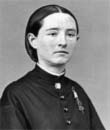
April 22, 1864
"In God We Trust" is added to U.S. coins. The phrase is pushed through by the United States Congress.
April 25, 1864
Marks's Mills, Arkansas is the site of a Confederate capture of over 200 Union supply wagons.
May 5, 1864
Attempting to push past the Union blockade, a naval action involving CSS Albemarle takes place at the Roanoke River opening. Neither side makes any headway.
May 5, 1864
The Battle of the Wilderness takes place across Spotsylvania and Orange counties in Virginia. Generals Ulysses Grant and George Meade face-off against Robert E. Lee. Strength includes 124,232 for the Union and about 65,000 for the Confederacy.
May 6, 1864
USS Commodore is sunk during a Confederate attack by way of torpedo. This takes place on the James River (Virginia).
May 7, 1864
The Battle of the Wilderness comes to an end as an inconclusive engagement. Losses and casualties for the Union number 17,666 and the Confederate totals 11,033.
May 7, 1864
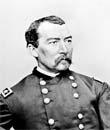
May 8, 1865
On this date, Confederate forces lay claim to five Union ships. The action occurs near Alexandria, Louisiana.
May 8, 1864
The Battle of Spotsylvania Court House begins. Union Generals Grant and Meade square off, once again, against Confederate General Robert E. Lee. The action takes place in Spotsylvania County, Virginia. Union forces number as many as 110,000 against a Confederate army of 63,000.
May 9, 1864
The Battle of Cloyd's Mountain is a limited engagement between 6,100 Union troops against 2,400 Confederates. It takes place in Pulaski County, Virginia and goes down as a Union victory. The battle is significant in eliminating the last Confederate line from Virginia into Tennessee. General George Crook directs the victors against Confederate Generla Albert Jenkins. Losses are 688 to 538, respectively.
May 10, 1864
Railroad equipment and track sections are destroyed at Beaver Dam Station, Virginia, under the direction of General Custer.
May 10, 1864
Confederate forces, numbering 4,000, at Crockett's Cove, Virginia, stand their ground against a Union charge of 2,500 strong. The attackers are driven back into West Virginia. Confederate General William E. Jones claims the victory over Union General William Averell. The official battle results are listed as inconclusive.
May 11, 1864
The Battle of Yellow Tavern is had in Hanover County, Virginia. It is a Union victory for General Sheridan and a loss for the combined forces of Confederate Generals Jeb Stuart and Fitzhugh Lee. Numbers are 12,000 for the victors and 5,000 for the defeated. Casualties number 625 and 300 respectively.
May 12, 1864
The Battle of Meadow Bridge takes place and is a Union victory as part of the Overland Campaign. General Sheridan is victorious over generals Fitzhugh Lee and James Gordon.
May 12, 1864
Union forces break through Confederate defensive lines at Snake Creek Gap. The action takes place near Dalton, Georgia and Union elements are directed by General Sheridan.
May 15, 1864
Confederate defenders at Resaca (Georgia), led by General Johnstom, are successful in holding their ground against Union attackers (General Sherman). The Battle of Resaca is determined to be inconclusive as the Confederates retreat. Nearly 100,000 Union men fought 60,000 Confederates. Losses were 4,500 to 2,800, respectively.
May 15, 1864
The Battle of Fort Darling - or Battle of Drewry's Bluff - is had pitting five Union warships against an artillery-laden Confederate fort in Chesterfield County, Virginia. It is a Confederate victory for General Beauregard. Union General Benjamin Butler is handed the defeat.
May 15, 1864
Confederate General Johnston withdraws his forces near Dalton, Georgia, under growing pressure from General Sherman.
May 15, 1864
The Battle of New Market takes place in Shenandoah County, Virginia. It is a Confederate victory for General Breckinridge over General Franz Sigel. Forces number 4,087 to 6,275, respectively, and losses total 531 to 841, respectively.
May 18, 1864
The Battle of Yellow Bayou is had in Avoyelles Parish, Louisiana. It results in a Union victory though not without both sides gaining, and eventually losing, the advantage several times during the battle. The Union is directed by Joseph Mower and the Confederates by Richard Taylor. Losses are 360 and 500 respectively.
May 20, 1864
The Battle of Spotsylvania Court House concludes as a Confederate tactical victory. General Lee takes the credit over Union leaders General Grant and Meade. Casualties and losses number 12,687 for the victors and 18,399 for the defeated.
May 20, 1864
The Battle of Ware Bottom Church sees Confederate General Beauregard victorious over Union General Benjamin Butler. The fighting takes place in Chesterfield County, Virginia.
May 23, 1864
The Battle of North Anna begins spanning Caroline and Hanover counties in Virginia. Union forces are led by Ulysses Grant and George Meade against Robert E. Lee and the outnumbered Confederate army (Army of Northern Virginia).
May 24, 1864
The Battle of Wilson's Wharf is fought. It is a Union victory at Charles City, Virginia. General Edward Wild claims the victory over General Fitzhugh Lee.
May 25, 1864
CSS Albemarle survives a Union torpedo attack at Albemarle Sound in North Carolina waters.
May 26, 1864
The Battle of North Anna ends with inconclusive results as neither side gains the advantage.
May 26, 1864
The Battle of New Hope Church in Georgia sees the Military Division of the Mississippi, under the leadership of Generals Sherman and Hooker, lose to the Army of Tennessee led by General Johnston.
May 26, 1864
Following their retreat from Alexandria, Louisiana, Union forces and General Nathaniel Banks reside in Donaldsonville.
May 28, 1864
The Battle of Haw's Shop takes place on this date. It is inconclusive. The 4,000-strong Union force is led by General David Gregg against the 4,500 Confederates under the leadership of General Wade Hampton.
May 30, 1864
The Battle of Old Church takes place. It is a Union victory for General Alfred Torbert.
May 31, 1864
The Battle of Cold Harbor begins as part of the Overland Campaign. Union forces number over 100,000 and are led by generals Ulysses S. Grant and George Meade. They face a Confederate army numbering around 60,000 and are led by General Robert E. Lee.
June 5, 1864
Piedmont, Virginia is the site of a Union victory under General David Hunter. The Battle of Piedmont spans June 5th and June 6th.
June 6, 1864
Staunton, Virginia falls to Union forces led by General David Hunter. Not a shot is fired.
June 7, 1864
Abraham Lincoln and Andrew Johnson are elected by the Republican Party to run for a second term in office. The party convention is held in Baltimore, Maryland with the war still ongoing.
June 9, 1864
General John Morgan undertakes his last raid on Kentucky soil, this at Mt. Sterling. The results are disastrous as they face Union military opposition.
June 9, 1864
Failing to unseat General Lee's defenders at Petersburg, Virginia, Union General Grant enacts a siege of the city. The siege will last (officially) until March 25th, 1865 and result in a Union victory.
June 10, 1864
The Battle of Brice's Crossroads is recorded. A smaller Confederate force of 3,500 cavalry is victorious against a Union army consisting of 4,800 troops, 3,300 cavalry, and 22 field guns. General Nathan Forrest directs the victors over General Samuel Sturgis of the Union. The action takes place near Guntown, Mississippi.
June 11, 1864
The Second Battle of Cynthiana is had in Kentucky. The Union victory emerges from a two-day contest in which 3,450 Union face-off against 1,200 Confederates. Losses equal 1,092 and 1,000 respectively.
June 11, 1864
The Battle of Trevalian Station is had in Louisa County, Virginia. Confederate Generals Wade Hampton and Fitzhugh Lee are victorious over Union leader General Sheridan. The battle spans into the 12th. Strength is 6,762 Confederates versus 9,286 Union. Casualties are 813 to 1,512 respectively.
June 12, 1864
The Battle of Cold Harbor ends as a much-needed Confederate victory for General Robert E. Lee. Frontal assaults against fortified Confederate positions mar the Union advance which leads to thousands of casualties.
June 12, 1864
Confederate General John Morgan retreats with his cavalry force away from Cynthiana, Kentucky.
June 14, 1864
Petersburg, Virginia is in the crosshairs of General Grant. His forces cross the James River en route to the town.
June 14, 1864
A former planter in Tennessee, Confederate General Leonidas Polk is killed by artillery fire at Kenesaw Mountain in Georgia during the Atlanta Campaign.
June 15, 1864
The 13th Amendment of the Constitution, intended to abolish slavery, is defeated in the House of Representatives by a vote of 95 to 66.
June 16, 1864
During a speech in Philadelphia, Pennsylvania, President Lincoln calls for more troops to finish the fight.
June 17, 1864
The Battle of Lynchburg is fought over a two-day span by two small forces. The Confederates numbering 14,000 under General Jubal Early are victorious in beating back 16,643 Union attackers led by General David Hunter.
June 24, 1864
The Battle of Saint Mary's Church takes place as part of the Overland Campaign. It is inconclusive.
June 27, 1864
The Battle of Kennesaw Mountin results in a Confederate victory. General Joseph Johnston faces off against Union General William Sherman in the clash. Numbers are 17,733 to 16,225 respectively and losses include 1,000 to 3,000, respectively.
June 28, 1864
The Fugitive Slave Act of 1850 is repealed. The measure is officially signed by President Lincoln. The law called for recaptured runaway slaves in Northern territories to be returned to their masters in the South.
June 30, 1864
To help finance the ongoing war, the United States government passes the Internal Revenue Act. This allows the government to increase income tax rates.
July 2, 1864
The Wade-Davis Bill of 1864, covering a proposal for reconstruction of the South following a conclusion to the war, is passed by both houses of Congress. However, much to the dismay of Radial Republicans, Lincoln does not sign the bill. Instead it is vetoed as Lincoln looks for a less severe plan. Authors of the Wade-Davis Bill are Senator Benjamin Wade (Ohio) and Representative Henry Winter Davis (Maryland).
July 2, 1864
With Washinton, D.C. as the primary target, cavalry forces led by General Jubal Early raid into Maryland. The operation would span into July 13th.
July 3, 1864
James Island, Charleston Harbor is the site of a successful Confederate defense of Fort Johnson against Union attackers.
July 4, 1864
A bill proposing that the U.S. Congress be placed in charge of the reconstruction of the South following the war is vetoed by Presidetn Lincoln.
July 4, 1864
A new provision signed into law by President Lincoln now guarantees a $100 yearly bonus to Union troops.
July 5, 1864
The New York Times is the recipient of a initial peace plan authored by the Confederacy.
July 7, 1864
Another Union attack is beaten back at Charleston, South Carolina, as the defenders continue to deny the important port city to the North.
July 9, 1864
The Battle of Monocacy in Frederick County, Maryland, sees a Union force (commanded by Lew Wallace) of 5,800 strong go up against a much larger Confederate army of 14,000. The successful delay of General Jubal Early's troops, en route to Washington, D.C., makes it a Union strategic victory. Washington, D.C. is reinforced in the mean time.
July 9, 1864
Union cavalry raids begin at Decatur, Alabama under the leadership of General Lovell Rousseau. The raids will head into Marietta, Georgia and span to July 22nd.
July 14, 1864
Harrisburg, Mississippi is the site of a successful Union defense against a Confederate attack. However, Union forces still flee and destroy the town in their wake. The force relocates to Memphis, Tennessee.
July 16, 1864
A skirmish is had between opposing forces at Heaton's Crossroads in northern Virginia (Loudoun County). Results of the one-day engagement are inconclusive. The event is also known as the Purcellville Wagon Raid.
July 17, 1864
The Battle of Cool Spring takes place over two days between a Union force of 5,000 against a Confederate army of 8,000. It results in a Confederate victory for General Jubal Early and John Breckinridge.
July 20, 1864
The Battle of Rutherford's Farm takes place (also known as Carter's Farm and Stephenson's Depot). It is a Union victory for General Averell over General Ramseur. Forces number 2,350 Union against 3,300 Confederates.
July 20, 1864
The Battle of Peachtree Creek takes place in Fulton County, Georgia. 21,655 Union troops under George H. Thomas claim the victory over the 20,250 Confederate army led by General John Hood (Army of Tennessee). Losses are 1,900 to 2,500, respectively.
July 22, 1864
Confederate forces attempt another attack on General Sherman's army outside of Atlanta. The attack fails.
July 22, 1864
The Battle of Atlanta becomes a Union victory. 34,863 Union troops under Generals Sherman and McPherson face-off against the Army of Tennessee and its 40,438 troops led by General Hood and Hardee. Losses are 3,641 against 5,500, respectively.
July 24, 1864
Kernstown, Virginia is the site of a successful cavalry attack by General Jubal Early over Union forces. It is recorded as the Second Battle of Kernstown.
July 26, 1864
General George Stoneman directs several cavalry raids across Georgia over the period spanning five days. He begins in Decatur and ends at Macon.
July 28, 1864
Ezra Church, Georgia - outside of Atlanta - is the site of another failed Confederate attack against General Sherman's Union forces.
July 30, 1864
A massive underground explosion by Union engineers fails to defeat the defenses of Petersburg, Virginia. General Burnside leads the Union forces.
July 30, 1864
Chambersburg, Pennsylvania is held for ransom by occupying Confederate troops. When the demand is not met, the town is burned.
July 30, 1864
During the Atlanta Campaign, Union General Stoneman is captured along with his aide near Macon, Georgia by Confederates. His prison term becomes just three months as he is released, mainly in part by the direct request of Union General Sherman himself.
August 2, 1864
The Battle of Mobile Bay begins pitting a Union force of 12 wooden ships, 4 ironclads and 2 gunboats against a Confederate force of 3 gunboats and one ironclad. Additionally, 5,500 Union troops make up a land contingent while the Confederates field 1,500 men. The battle would last until August 23rd. David Farragut and Gordon Granger are the Union leaders. The Confederates are led by Franklin Buchanan and Richard Page.
August 3, 1864
General Horace Capron and his forces near Jug Tavern in Georgia come across a Confederate force.
August 7, 1864
The Battle of Moorefield takes place in Hardy County, West Virginia. It is a Union victory for General William Averell over Confederate leader John McCausland. Union strength is 1,760 against 3,000 Confederates. Casualties are 42 against 488, respectively.
August 8, 1864
The Union Army, directed by Gordon Granger, takes Fort Gaines (Dauphin Island) during the Battle of Mobile Bay. 900 prisoners are taken.
August 16, 1864
The Battle of Guard Hill in Warren County, Virginia is an inconclusive engagement between the two parties. General Thomas Devin leads Union forces against Confederate General William Wofford. Losses are 71 to 480, respectively. The engagement is also known as the Battle of Crooked Run.
August 17, 1864
General Sheridan is forced to retreat back across the Potomac under force from Confederate leader Jubal Early.
August 21, 1864
The Battle of Summit Point, also known under the names of Flowing Springs and Cameron's Depot, takes place in Summit Point, West Virginia. It is an inconclusive engagement involving Union General Sheridan and Confederate Generals Anderson and Early.
August 21, 1864
Union-held Memphis, Tennessee is attacked by Confederate forces under the command of General Nathan Forrest.
August 23, 1864
The Battle of Mobile Bay comes to a close on this date. It is a Union victory with 151 killed and 177 wounded for the Union and 13 killed and 22 wounded for the Confederate. One Union ironclad is sunk. 1,587 Confederate troops are captured in the fighting and one gunboat destroyed.
August 23, 1864
Union General Gordon Granger claims Fort Morgan during the Battle of Mobile Bay. Confederate General Richard Page surrenders the fort.
August 25, 1864
The Battle of Smithfield Crossing is another inconclusive engagement between the two sides in West Virginia. The fighting spans August 25th into August 29th.
Aigust 29, 1864
Union General George McClellan is nominated by the Democratic Party in Chicago, Illinois. He will square-off in the Presidential Election of 1864 against incumbent Abraham Lincoln.
August 31, 1864
The Battle of Jonesborough begins in Clayton County, Georgia. General Sherman leads 70,000 Union troops against 24,000 Confederates under General Hood and General Hardee.
August 31, 1864
A repulsed attack at Jonesborough effectively marks the last attempt by the Confederacy to hold Atlanta.
September 2, 1864
General Sherman's force takes the city of Atlanta. This ends the Atlanta Campaign which began back in May of 1964 and is marked as a major Union victory - certainly helping President Lincoln's reelection chances.
September 3, 1864
From the period of September 3rd until the 4th, the Battle of Berryville takes place in Clarke County, Virginia. It is an inconclusive engagement.
September 4, 1864
Confederate General John Morgan is killed by Union troops. He dies aged 39 in Greeneville, Tennessee.
September 7, 1864
Civilians are ordered out of the city of Atlanta following its capture by Union forces.
September 8, 1864
Union General George McClellan accepts the Democratic candidacy for President of the United States.
September 14, 1864
The "Beefsteak Raid", a Confederate cavalry raid, takes place in Prince George County, Virginia. 300 Union troops are captured as are 2,685 heads of cattle. It is a Confederate victory.
September 16, 1864
General Grant's HQ in Virginia is raided. Some 2,500 cattle are taken. The Confederate force is led by General Wade Hampton.
September 18, 1864
Union defenders stand fast against a Confederate attack at Fort Gibson (Oklahoma / Indian Territory).
September 19, 1864
The Third Battle of Winchester (Battle of Opequon) is had. It is a Union victory in Virginia for General Sheridan over General Early.
September 19, 1864
The Third Battle of Winchester is fought as a Union victory. General Sheridan leads Union forces against Confederate Jubal Early in Virginia.
September 19, 1864
Confederate General Sterling Price begins a series of cavalry raids into Missouri.
September 21, 1864
The Battle of Fisher's Hill takes place in Shenandoah County, Virginia. It is a Union victory for General Sheridan over General Early. Fighting spans the 21st into the 22nd.
September 21, 1864
Middle Tennessee is the target of several cavalry raids by Confederate General Nathan Forrest.
September 22, 1864
General Sheridan of the Union Army is victorious over Jubal Early and his Confederate force at the Battle of Fisher's Hill in Virginia.
September 24, 1864
The Union Defenders at Athens, Alabama are removed by a Confederate cavalry force led by General Forrest.
September 27, 1864
Fort Davidson, Missouri is the site of a Union victory over the Confederates. The victors are commanded by General Thomas Ewing. General Sterling Price leads the Confederate attackers.
September 29, 1864
The Battle of Chaffin's Farm and New Market Heights is had. Union forces, numbering 26,600 strong, are led by General Benjamin Butler. The Confederate force numbers 14,500 and is led by General Robert E. Lee and General Richard Ewell. The battle spans September 29th into the 30th in Henrico County, Virginia and ends as a Union victory.
October 1, 1864
Confederate General Wheeler begins a week-long period of raids into Tennessee against Union targets - namely army supply lines.
October 2, 1864
The Battle of Saltville in Virginia takes place. The one-day battle is a victory for the Confederate Home Guard numbering 300. They face a force of 5,000.
October 2, 1864
Anderson's Cross Roads in Tennessee is the site of one of General Wheeler's raids into Union-held Tennessee. A supply wagon train is taken.
October 3, 1864
Confederate forces under General Bell take Big Shanty and Acworth - both in Georgia.
October 5, 1864
The Battle of Allatoona is fought in Bartow County, Georgia. Union strength numbers 2,025 against a Confederate army of 3,276. The clash is a Union victory, part of the Franklin-Nashville Campaign, with casualties totaling 706 for the victors and 897 for the South.
October 7, 1864
Union forces are successful against General Wheeler's cavalry at Duck River in Tennessee.
October 9, 1864
The Battle of Tom's Brook takes place in Shenandoah County, Virginia. It is a Union victory.
October 11, 1864
The Butler Medal is commissioned by Major General Butler of the Union Army. This award recognizes heroic acts by black soldiers during the Battle of Chaffin's Farm and New Market Heights. The medal is personally funded by Butler.
October 10, 1864
The state of Maryland adopts a new constitution aimed at officially ending the practice of slavery within its borders.
October 15, 1864
Camp Lawton, a large Confederate prison outside of Millen in Georgia opens its doors to the first Union troops.
October 16, 1864
More Confederate raids are had into Tennessee. General Forrest begins a near-month-long campaign targeting Union supply lines. The campaign ends around November 10th.
October 19, 1864
The Shenandoah Valley is made more secure with a Union victory at the Battle of Cedar Creek in Virginia. General Sheridan is victorious over General Early in this one-day affair.
October 22, 1864
The Battle of Byram's Ford is fought. Union forces are victorious in Kansas City, Missouri.The battle rages into the 23rd.
October 25, 1864
Confederate generals John Marmaduke and William Cabell are taken prisoner (along with 1,000 troops) through actions by Union General Alfred Pleasonton.
October 27, 1864
CSS Albemarle, commissioned as recently as April 1864, is sunk by a Union spar torpedo. She is captured and later raised and sold off.
November 4, 1864
Three Union gunboats in the Tennessee River are claimed by Confederate forces near Johnsonville, Tennessee.
November 8, 1864
Incumbent President Abraham Lincoln (a Republican) wins a second term in the unprecedented election held during the American Civil War. He handily defeats Union General George McClellan (a Democrat) 212 to 21 Electoral Votes. Though Louisiana and Tennessee are firmly under Union control, their electoral votes are not counted officially. Lincoln's running mate is Andrew Johnson. Lincoln carries Illinois but does not win Kentucky.
November 8, 1864
Despite the ongoing war, the President Election is held on this date. Incumbent Abraham Lincoln decisively wins over challenger General George McClellan. Andrew John remains as Vice President.
November 15, 1864
Union General Sherman's "March to the Sea" is begin in Georgia. The campaign would last until December 21st and result in a major Union victory. The offensive starts in Atlanta, Georgia which is now under Union control.
November 22, 1864
The Battle of Griswoldville is fought in Jones County, Georgia. It is a Union victory.
November 22, 1864
Union General Sherman makes a stop at the estate of Confederate General Cobb. The home is razed when the force leaves.
November 23, 1864
Union forces at Fort Fisher in North Carolina fail to unseat Confederate defenders through explosives.
November 23, 1864
The city of Milledgeville - the capital of Georgia from 1804 until 1868 - is captured by Union forces numbering 30,000 under General Sherman. Much damage is had to the city but many of its classic homes are spared.
November 24, 1864
The Battle of Columbia in Tennessee is had between a Confederate force of 35,000, led by General Hood, against a Union Army numbering 28,000 under General Schofield. The fighting lasts until the 29th.
November 25, 1864
Confederate agents set fires across New York City. The plan was hatched by Confederate cavalry commander John Morgan early on in Canada. The actions were modeled after the Draft Day riots of 1863. Some nineteen fires are started by eight agents dressed in civilian clothing.
November 26, 1864
General Wheeler and his Confederate cavalry forces are unsuccessful at Griswoldville, Georgia against the forces of General Sherman.
November 29, 1864
The Battle of Spring Hill is fought in Maury County, Tennessee. Union General Schofield claims the victory over General Hood.
November 30, 1864
The Battle of Franklin takes place on this date. 27,000 Union troops face-off against 27,000 Confederates. The battle is recorded as a Union victory for General Schofield over General Hood. Losses include 2,326 for the victors and 6,252 for the Confederates. An ill-advised charge by Hood costs the Confederate army dearly as losses total 25% of his fighting force.
November 30, 1864
The Battle of Honey Hill is fought in Jasper County, South Carolina, and ends as a Confederate victory despite a force of 1,400 facing 5,000 Union troops.
December 1, 1864
Union cavalry raids are launched throughout the Tennessee east and into the Virginian west. General George Stoneman leads the charges which will last into early January.
December 1, 1864
Confederate forces under the command of General John Hood of the Army of Tennessee amass outside of Nashville. Numbers will soon reach 30,000 for the Battle of Nashville by mid-month.
December 6, 1864
Salmon Chase, the former Secretary of the Treasury, is appointed to the Supreme Court by President Lincoln.
December 12, 1864
Union forces undertake a new offensive to capture the Confederate-held position at Fort Fisher, North Carolina. The offensive will last until the 27th.
December 13, 1864
New York City celebrates the arrival of Admiral David Farragut after his major successes in New Orleans, Vicksburg, and Mobile Bay.
December 13, 1864
Fort McAllister falls to Union guns. The capture is another victory for General Sherman as the Union army inches its way closer to the prize that is Savannah, Georgia.
December 15, 1864
The Battle of Nashville (Tennessee) begins with a Confederate force of 30,000 under General Hood facing General Thomas and his 55,000-strong Union army.
December 16, 1864
The Battle of Nashville ends as a Union victory for General George Thomas. Confederate General Hood's losses are double (6,000 to 3,061) what Union forces see. The end of the fighting also spells the end for the Army of Tennessee.
December 20, 1864
With General Sherman's Union force gaining ground, the Confederates are forced to flee from their positions in Savannah.
December 21, 1864
Sherman's "March to the Sea" campaign ends as a Union victory. It began in captured Atlanta and ended with the fall of Savannah, Georgia.
December 21, 1864
The Confederate Navy's Savannah Squadron fleet is ordered destroyed to keep the vessels from falling into enemy hands.
December 22, 1864
Sherman's 'March to the Sea' comes to a close with the capture of Savannah, Georgia.
December 25, 1864
Again, defenders at Fort Fisher (Wilmington, North Carolina) survive another Union attempt to take their position. This time the Union enacts a combined land and sea attack to no avail.
December 26, 1864
President Lincoln, by letter, personally thanks General William Sherman for his successful campaign - his 'March to the Sea' - which began on November 15th that finally delivered Savannah, Georgia in time for Christmas.
December 27, 1864
Defenders at Fort Fisher, North Carolina, are successful in their defense against a Union offensive to retake the position.
December 28, 1864
Fort Harrison is taken by Union troops led by General Grant. This is significant in that the fort guards the route towards Richmond, Virginia - the Confederate capital.
January 10, 1865
Congress formally congratulates General Sherman on his exploits across Georgia resulting in the capture of Savannah.
January 16, 1865
Confederate President Jefferson Davis discusses peace with Francis Blair, Sr, advisor to President Lincoln. The talks are held in secret.
January 24, 1865
A Confederate attempt to assault General Grant's headquarters at City Point (Virginia) is called off.
January 31, 1865
By this date, the Confederate prisoner count at Camp Chase (Columbus, Ohio) nears 9,425.
February 1, 1865
A new march by General Sherman sees his army proceed north into South Carolina and then North Carolina.
February 3, 1865
Alexander Stephens, representing the Confederacy as its Vice President, offers a peace to President Lincoln during a meeting taking place at Hampton Roads in Virginia. The peace overture is rejected by the President.
February 5, 1865
In an effort to help end the bloodshed of the Civil War, President Lincoln offers monetary compensation to the South pending their acceptance of the 13th Amendment and a cessation of fighting. However, Lincoln's own people do not support the plan so it is dropped.
February 5, 1865
The Battle of Hatcher's Run begins in Dinwiddle County, Virginia. A 34,517 strong Union force faces a 13,835 strong Confederate army. Union forces are headed by General Andrew Hunmphreys and General Gouverneur Warren. Confederate forces are directed by John B. Gordon.
February 7, 1865
The Battle of Hatcher's Run in Virginia comes to a close. It is a Union victory. Losses total 1,539 for the Union and 1,161 for the Confederacy.
February 9, 1865
The U.S. Congress officially congratulates General Philip Sheridan on his exploits centering on the Shenandoah Valley Campaign.
February 11, 1865
The Battle of Wilmington (North Carolina) begins between 12,000 Union and 6,000 Confederate troops. Generals Schofield and Porter lead the Union against General Bragg of the Confederacy. Fighting would last until February 22nd.
February 17, 1865
Posing as a male Confederate soldier, Mollie Bean is taken prisoner by Union forces outside of the Confederate capital of Richmond in Virginia. Under questioning, she reveals that she has fought with the 47th (North Carolina) for a period of two years, having been wounded at least twice.
February 18, 1865
Castle Pinckney in Charleston Harbor (South Carolina) falls to the South Carolina 21st Colored Infantry of the Union army.
February 21, 1865
The Battle of Douglas Landing takes place in Pine Bluff, Arkansas. It is a Confederate victory.
February 27, 1865
Raids under the direction of Union General Sheridan begin against Confederate holdings across northern Virginia.
March 2, 1865
Confederate General Robert E. Lee offers peace negotiations to President Lincoln. The overture is rejected.
March 2, 1865
The Battle of Waynesboro takes place in Virginia. It is a Union victory and notable for the destruction of General Jubal Early's army. Strength includes 2,500 Union against 1,600 Confederates with casualties being 9 to 1,500, respectively.
March 3, 1865
The Freedmen's Bureau is established by the United States government to aid newly-freed slaves. The organizations formal name is 'Bureau of Refugees, Freedmen, and Abandoned Lands' as is part of the Reconstruction initiative the Union plans for the South following the end of the war.
March 4, 1865
The second inauguration of President Lincoln is had on this date. In the audience is future assassin, actor John Wilkes Booth.
March 10, 1865
The Battle of Monroe's Crossroads is recorded on this date. Fighting takes place near Fayetteville in North Carolina and is an inconclusive engagement.
March 14, 1865
Union forces under the direction of General Sheridan take Fayatteville, North Carolina.
March 16, 1865
The Battle of Averasborough takes place in North Carolina. It is an inconclusive engagement between the forces of General Sherman and General Hardee.
March 17, 1865

March 19, 1865
The Battle of Bentonville takes place in Bentonville, North Carolina. It is a Union victory for General Sherman over General Johnston. Strength is 60,000 to 21,900 with losses reaching 1,527 to 2,606, respectively. Fighting goes into the 21st.
March 21, 1865
Confederate President Davis is alerted by General Lee that no more can be done to slow down General Sherman's Union army.
March 24, 1865
President Lincoln begins a three-week visit to General Grant at his headquarters in City Point, Virginia. Among those in attendance is General Sherman.
March 25, 1865
Union troops are victorious at the Battle of Fort Stedman in Petersburg, Virginia. The engagement is also known as the Battle of Hare's Hill.
March 28, 1865
In a meeting with top officers, President Lincoln pushes for surrender of the Confederacy under softer terms.
April 1, 1865
The Battle of Five Forks is fought between forces of General Sheridan and General Pickett near Petersburg, Virginia. It is a Union victory with lopsided losses for the Confederacy (2,950 Confederates to 830 Union).
April 2, 1865
The Battle of Fort Blakely begins in Baldwin County, Alabama. It is part of the Mobile Campaign and pits 45,000 Union attackers against 4,000 Confederate defenders. This battle marks the last combined-force engagement of the Civil War.
April 2, 1865
The Battle of Selma takes place in Selma, Alabama. It is a Union victory for General James Wilson and a defeat for Confederate General Nathan Forrest. Strength is 9,000 to 4,000, respectively. Confederate forces suffer mightily as some 2,700 are taken prisoner (General Forrest manages to escape capture).
April 3, 1865
Union forces claim both Petersburg and the Confederate capital city of Richmond in Virginia in a major blow to the Confederacy.
April 4, 1865
Union forces take Tuscaloosa, Alabama in the Battle of Tuscaloosa. It is captured by General John Croxton.
April 5, 1865
President Lincoln tours the former Confederate capital of Richmond following its capture by Union forces.
April 6, 1865
The Battle of Sailor's Creek (or Sayler's) takes place between Union General Philip Sheridan and his 26,000-strong army against Generals Richard Ewell and John Gordon of the Confederacy. Confederate strength numbers 18,500 men. It is a Union victory in Virginia.
April 8, 1865
Appomattox train station is the site of a Union capture of enemy supplies. General George Custer presides over the victory.
April 9, 1865
The Battle of Appomattox Court House takes place marking one of the final engagements of the American Civil War. The battle is a decisive Union victory and sees General Lee surrender his Army of Northern Virginia to General Grant. The Union army is made up of 150,000 soldiers against the Confederate's 28,000.
April 14, 1865
The United States Flag once again flies over the walls of Fort Sumter - where the first shots of the war were fired.
April 14, 1865
On this date (Good Friday), President Lincoln is shot by actor John Wilkes Booth during the play "Our American Cousin" at the Ford's Theater in Washington, D.C. Other targets of the attack are Andrew Johnson and William H. Seward.
April 14, 1865
In the same attack that would claim the life of President Lincoln, Secretary of State William Seward is stabbed but survives.
April 15, 1865
President Lincoln dies from his wound at 7:22AM at the Petersen house across the street from Ford's Theater.
April 16, 1865
The Battle of West Point takes place in West Point, Georgia. It is a Union victory for Oscar La Grange over Robert Tyler. This engagement marks the last battle to take place east of the Mississippi River.
April 18, 1865
Durham Station, North Carolina is the site of a Confederate army surrender. Union General William Sherman presides as he accepts the surrender of General Joseph Johnston and his forces.
April 19, 1865
Lincoln's funeral procession takes place down Pennsylvania Avenue in Washington, D.C.
April 19, 1865
Confederate President Davis, now in Charlotte (North Carolina) is informed of President Lincoln's assassination and death.
April 21, 1865
The Lincoln Funeral Train departs Washington, D.C. en route to Springfield, Illinois.
April 23, 1865
Confederate President Davis attempts to negotiate a favorable peace calling for southern states to be allowed entrance into the Union without changes. The North rejects this request.
April 24, 1865
Confederate forces set alight the side-wheel steam ram CSS Webb lest it should fall into enemy hands. This takes place in New Orleans waters.
April 26, 1865
The army under Confederate General Johnston is formally surrendered to Union authorities.
April 26, 1865
After a lengthy manhunt for President Lincoln's killer, John Wilkes Booth is surrounded in a barn on rural Virginia farm (Port Royal). The barn is set ablaze and Booth is fatally shot.
April 26, 1865
The Army of Tennessee formally surrenders to Union authorities. This takes place at Greensboro, North Carolina.
May 2, 1865
Acting President Andrew Johnson places a bounty of $100,000 on the head of Confederate President Jefferson Davis.
May 4, 1865
Citronelle, Alabama is the site of a Confederate Army surrender to Union forces. General Richard Taylor directs the Confederates. Union General Edward Canby presides over the event.
May 5, 1865
Captain Micajah Clark is announced as the Confederate's treasurer. This is President Jefferson Davis' final act as President of the Confederacy in the war. The act takes place in Washington, Georgia.
May 4, 1865
Slain President Abraham Lincoln is laid to rest at Oak Ridge Cemetery (Springfield, Illinois).
May 4, 1865
While attempting to escape, Confederate President Jefferson Davis is taken prisoner by Northern forces near Irwinsville, Georgia.
May 11, 1865
Alexander Stevens, former Vice President of the Confederate States, is arrested in Georgia.
May 11, 1865
Chalk Bluff, Arkansas is the site of another Confederate Army surrender to Northern forces.
May 11, 1865
Tallahassee, Florida is the side of another Confederate Army surrender to Union authorities.
May 12, 1865
The last battle of the Civil War is fought at Palmetto Ranch near Brownsville (Texas). The Battle of Palmetto Ranch spans two days.
May 19, 1865
The large Confederate prison-of-war camp at Tyler, Texas - Camp Ford - is officially closed.
May 22, 1865
Former Confederate President, Jefferson Davis, now a prisoner of the North, is relocated to Fort Monroe in Virginia.
May 23, 1865
The Grand Review is held in Washington, D.C. by the Union Army covering a two-day span.
May 26, 1865
The last major Confederate force is surrendered to authorities of the North in Galveston, Texas. This involves Confederate General Edmund Kirby Smith and his Trans-Mississippi Department. General Edward Canby presides over the event.
June 6, 1865
Amnesty is offered by the federal government to those Confederate prisoners-of-war who agree to not have fought against the Union by choice.
June 23, 1865
The last Confederate general surrenders to Union authorities. Colonel Asa Matthews presides over the procedure which sees General Stand Waitie surrender his Cherokee cavalry.
June 28, 1865
The last artillery shot of the war is fired, this by CSS Shenandoah, across the bow of an American whaler vessel. Eleven ships of the type are captured.
July 18, 1865
The European Squadron is reactivated by the United States Navy. Admiral Louis Goldsborough is placed in command.
August 17, 1865
Nurse Clara Barton raises the American flag over the Andersonville National Cemetery in Andersonville, Georgia. The site is near the Andersonville prisoner-of-war camp.
September 5, 1865
Ports along the south of the United States are now all officially open for business.
November 10, 1865
The commanding officer and overseer - Major Henry Wirz - of the infamous Andersonville prison camp at Andersonville, Georgia is hanged. He is the only enemy authority to be hanged a war criminal. The event takes place in Washington.
December 1, 1865
The Writ of Habeas Corpus, suspended by now-slain U.S. President Abraham Lincoln, is reestablished by President Andrew Johnson.
December 6, 1865
The 13th Amendment is ratified by the U.S. government, legally ending slavery in the United States of America.


